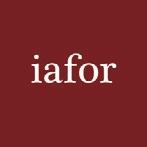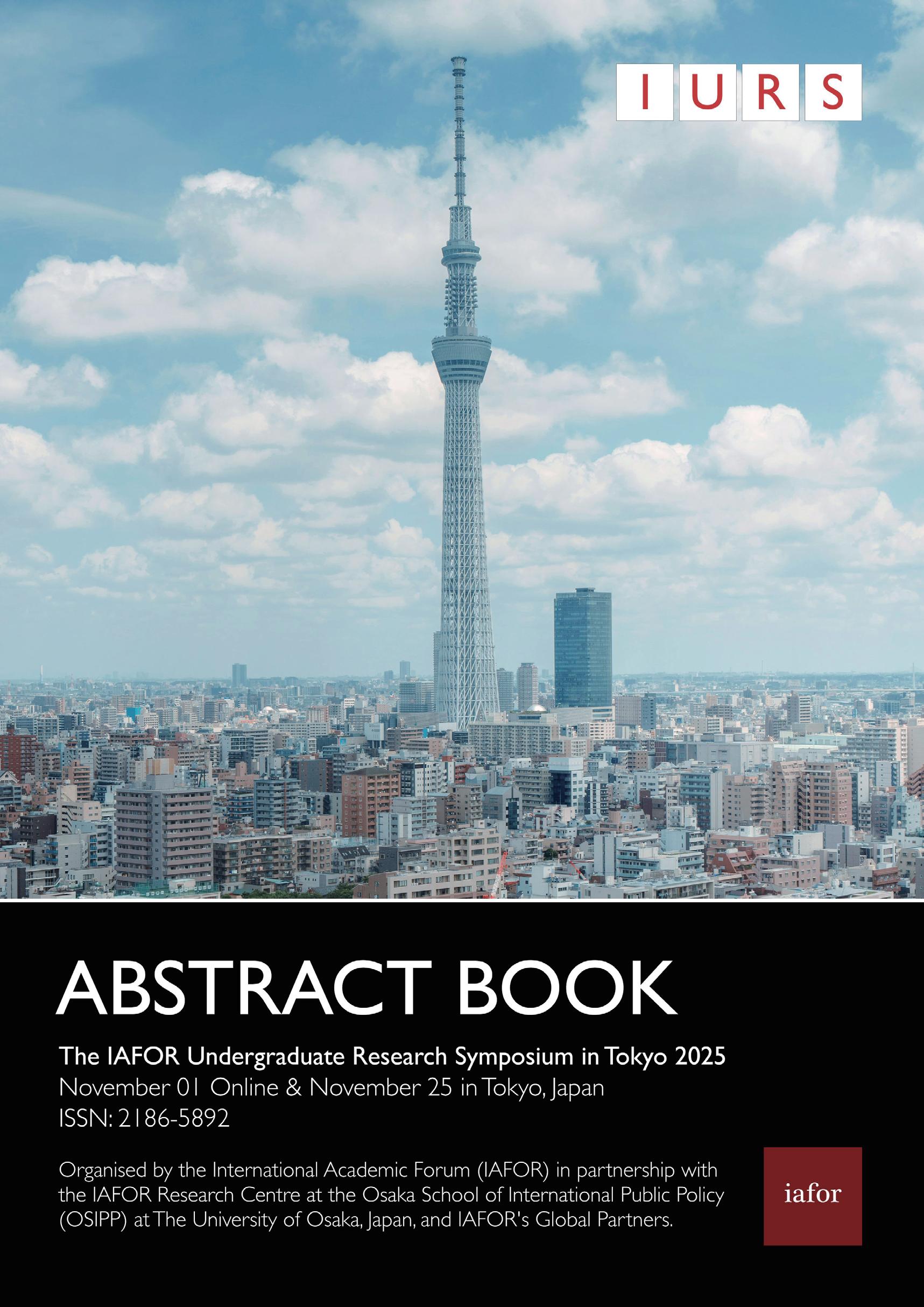
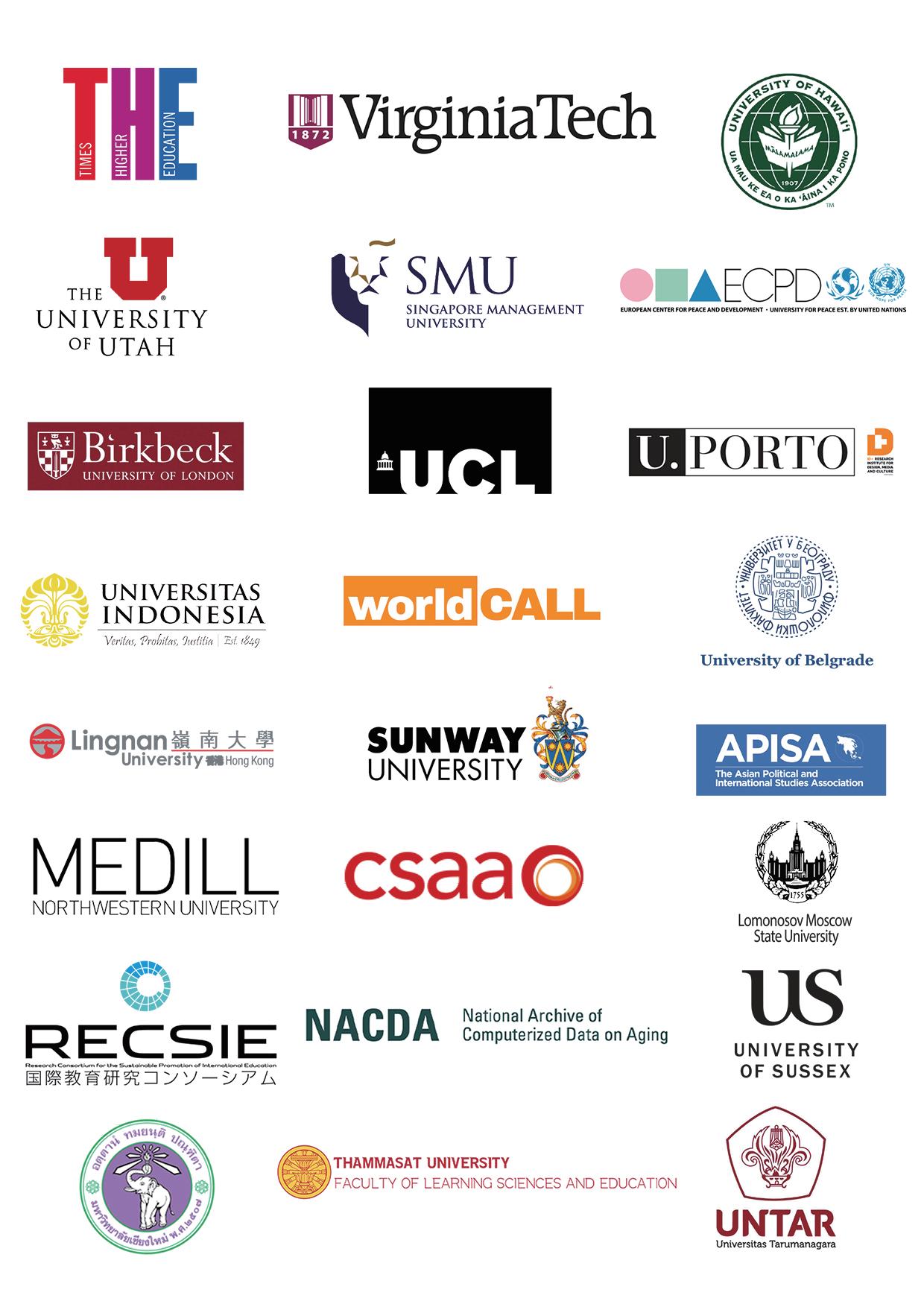






Dear Amazing Undergraduates,
Welcome to the IAFOR Undergraduate Research Symposium in Tokyo 2025!
This year, we are delighted to welcome 85 presenters from 17 countries across the globe to Tokyo, Japan for a great day to honour scholarly excellence, foster interdisciplinary dialogue, and help prepare you, the exceptional undergraduate researchers, for graduate study and professional advancement.
Your work here is not ‘just a poster’ or ‘just a 10-minute talk’. You are cultivating your critical thinking and contributing to the advancement of knowledge. You are functioning at the highest levels of your peer group.
This IURS event offers you an incredible opportunity to engage with academic professionals and like-minded exceptional students, to make friends, engage, support, and challenge each other to be extraordinary in what can only be described as an extraordinary environment: a dynamic undergraduate symposium at a world-class academic conference in one of the world’s great cities of resilience and innovation.
So I encourage you to seize the moment: appreciate your life, your curiosity, your abilities, your opportunities. This will be a most memorable moment for you – and for all of us.
On we go!
With all best wishes,

Professor Grant Black Vice President, The International Academic Forum (IAFOR) Professor, Chuo University University, Japan
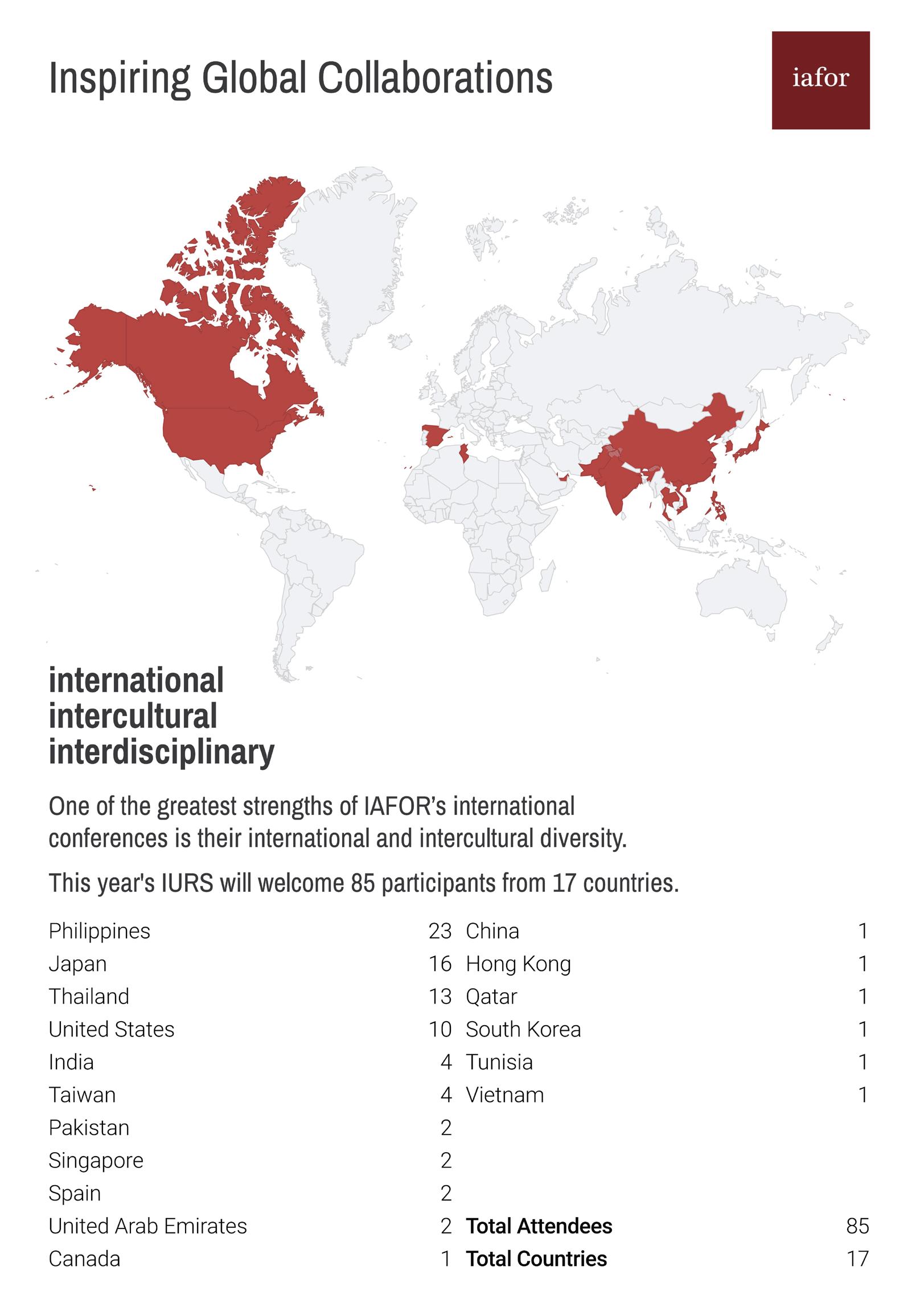
Wearing your badge is required for entrance to the sessions. You must wear your badge at all times.
Certificates of Presentation will be sent out by email in a PDF format after the conference by Friday, December 12, 2025
Free WiFi is provided at the conference venue for light use, like reading emails and web browsing.
Toshi Center Hotel
Network Name: Toshicenter_Hotel_Wi-Fi
Password: toshi19590302
Human interaction through networking, and dissemination of this knowledge, is at the core of what IAFOR does as an academic research organisation, conference organiser and publisher. As part of the archiving of the conference event, IAFOR takes photos in and around the conference venue, and uses the photos to document the event. This also includes the filming of certain sessions. We consider this documentation important and it provides evidence of our activities to members, partners and stakeholders all over the world, as well as to current and potential attendees like you. Some of these photos will therefore appear online and in print, including on social media. The above are the legitimate interests of the organisation that we assert under the European Union law on General Data Protection Regulation (GDPR). Under this legislation, you have an absolute right to opt out of any photo. We are committed to protecting and respecting your privacy. Read our full privacy policy – iafor.org/about/privacy-policy
Conference Venue: Tuesday, November 25
Toshi Center Hotel
Address: Hirakawacho 2-4-1, Chiyoda Ku, Tokyo
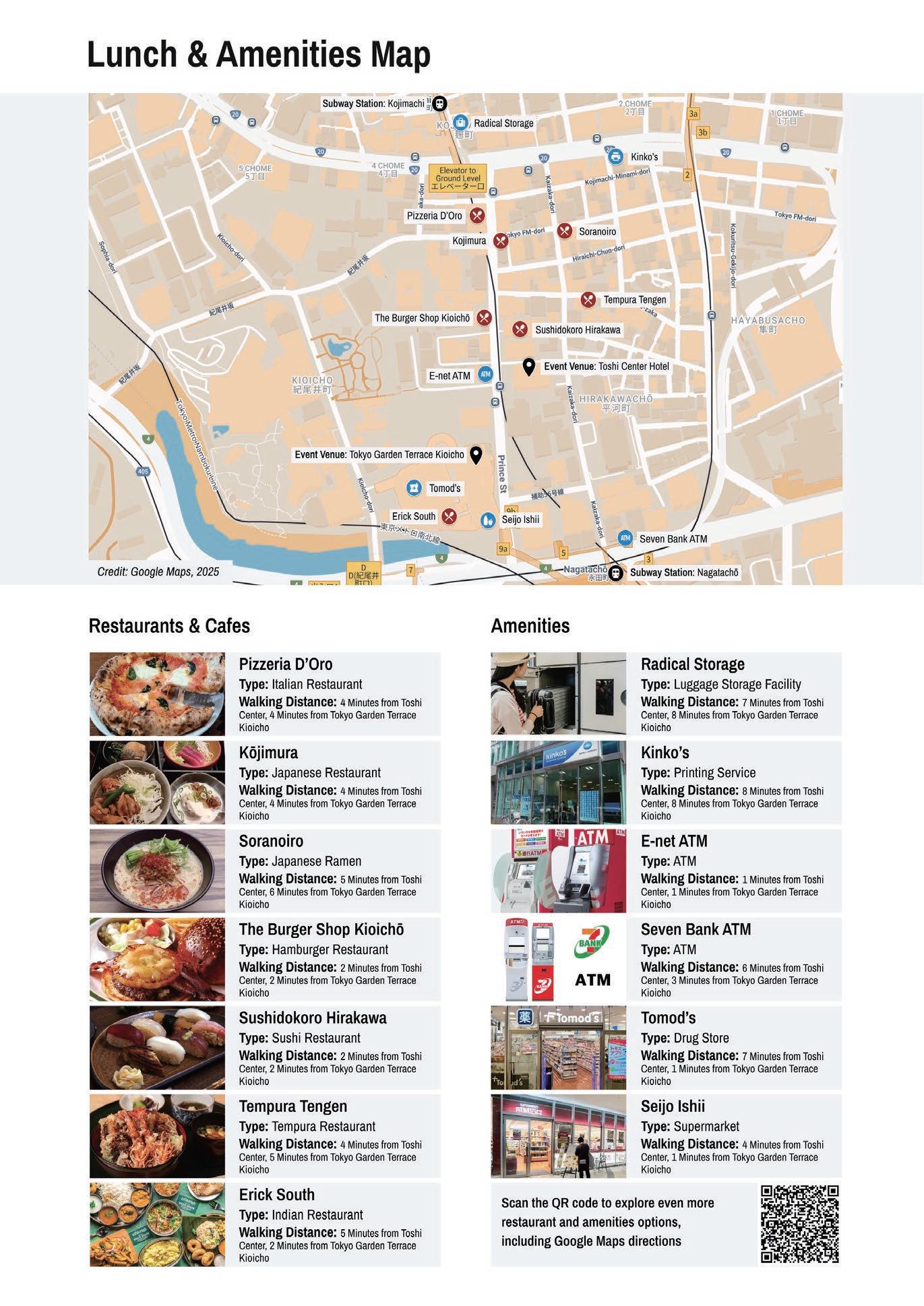
Please note that lunch is not provided. This map offers suggestions on where you can eat around the conference venue, as well as the locations of local amenities.

| All times are Japan
Symposium Venue: Online via Zoom
09:50-10:00 Delegate Check-in
Login to the Zoom session
10:00-10:10 Welcome Announcement and Introduction
Grant Black, Chuo University & IAFOR, Japan
Apipol Sae-Tung, IAFOR, Japan
10:10-10:40
Session 1: Ice-Breaking Session & Self-Introductions
Grant Black, Chuo University & IAFOR, Japan
Dexter Da Silva, Keisen University & IAFOR, Japan
Melina Neophytou, IAFOR, Japan
This icebreaker session encourages students to practice self-introduction and get to know their peers.
10:40-10:50 Break
10:50-11:15 Session 2: Group Discussion
Grant Black, Chuo University & IAFOR, Japan
In this session, students have the chance to practice small group discussions. The topic could include their academic interests, their preparation to attend the symposium, and their future career paths.
11:15-11:25 Break
11:25-11:45 Session 3: Conferences and Presentations
Grant Black, Chuo University & IAFOR, Japan
Students learn how to conduct themselves at conferences during different types of presentations. Students will be guided on how to ask and answer questions, as well as how to deal with difficult situations and disagreements.

November 1 | All times are Japan Standard Time (UTC+9)
Symposium Venue: Online via Zoom
11:45-12:30
Session 4: Poster Review Session
Grant Black, Chuo University & IAFOR, Japan
Students will share their posters within the small groups. They are expected to share good practices and challenges, as well as the idea behind the poster, how they designed it, and their current progress.
12:30-12:40 Break
12:40-12:55
Session 5: Open-Mic: Share What You Learned
This session will focus on the skills involved in communicating ideas publicly. Students are expected to share what they have learned in today’s workshop.
12:55-13:00 Closing Remarks

November 25 | All times are Japan Standard Time (UTC+9)
Conference Venue: Toshi Center Hotel, Tokyo
09:30-10:00 Student Participant Check-in | Room 701 (7F)
10:00-10:15 Welcome Address | Room 701 (7F)
Grant Black, Chuo University & IAFOR, Japan
10:15-11:00 Discussion Session | Room 701 (7F)
What I Wish I Knew When…
Dexter Da Silva, Keisen University, Japan
Tzu Bin Lin, National Taiwan Normal University, Taiwan
James W. McNally, University of Michigan, United States & NACDA Program on Aging
11:00-11:15 Break | Subaru Room (5F)
11:15-11:40 Networking Workshop | Room 701 (7F)
Attending the Conference: Making Meaningful Connections Grant Black, Chuo University & IAFOR, Japan
11:40-12:00 Presentation Workshop | Room 701 (7F)
How to Give an Effective Poster Presentation Grant Black, Chuo University & IAFOR, Japan
12:00-12:35 Extended Break

November 25 | All times are Japan Standard Time (UTC+9)
12:35-13:30 Presentation Workshop | Room 701 (7F)
How to Give an Effective Poster Presentation (Practice and Performance)
Grant Black, Chuo University & IAFOR, Japan
13:30-13:45
Poster Set-up | Subaru Room (5F)
Poster set-up for Session 1 presenters
13:45-14:00 Short Break
14:00-15:00
IURS Poster Presentation Session 1 | Subaru Room (5F)
Architecture, Geography and Urban Studies
Psychology and the Behavioral Sciences
Media, Film and Communication Studies
Science, Technology, Engineering & Math
Sustainability: Ecology, Energy and the Environment
Culture, Popular Culture and Cultural Studies
15:00-15:30 Break | Subaru Room (5F)
Poster set-up for Session 2 presenters
15:30-16:30 IURS Poster Presentation Session 2 | Subaru Room (5F)
Economics and Business Studies
Education
Language, Literature, and Linguistics
Political Science: Administration, Governance and Finance
Sociology, Social Work and Social Concerns
16:30-16:45 Concluding Remarks
Grant Black, Chuo University & IAFOR, Japan
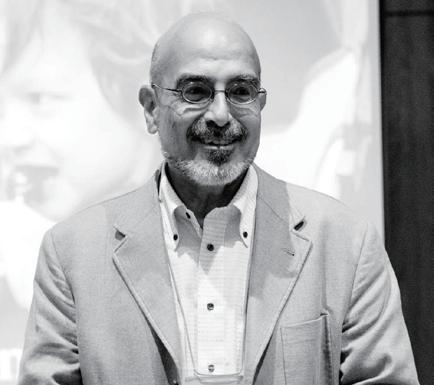
Professor Dexter Da Silva is Professor Emeritus at Keisen University in Tokyo, Japan, where he has been teaching for 35 years. He is an Educational Psychologist who has taught at junior high school, language schools, and universities in Sydney, Australia, and at various educational institutions in Japan. He was educated at the University of Sydney, Australia (BA, Dip. Ed., MA), and the University of Western Sydney, Australia (PhD). He has presented and copresented at conferences throughout Asia, Australia, Europe, and the United States, and published or co-published a number of books, articles, and book chapters on education-related topics. He is a past president of the Asian Psychological Association and currently a Vice-President of IAFOR. As an Educational Psychologist, he is very interested in how Artificial Intelligence will continue to be incorporated into and impact research and theory on the nature, types, and uniqueness of Human Intelligence(s).

Professor Lin has extensive working experience in academia, especially in diverse cultural settings and high-level leadership positions. He works in the Department of Education and serves the role of Vice-President for Teacher Education at the National Taiwan Normal University. He was the Associate Vice-President for Academic Affairs, head of the Center for Teaching and Learning Development (CTLD), Deputy director of the Office of Bilingual Education (OBE) and the Ministry of Education Funded Resource Center for EMI, deputy head of the Department of Education and head of the Practicum Office in the College of Teacher Education at the National Taiwan Normal University (NTNU). Prior to his current position at NTNU, he worked at Bournemouth University UK and the National Institute of Education (NIE), Singapore. Currently, he is an assistant editor of Cogent Education and an editorial board member in several international journals such as Asia TEFL (SCOPUS), and Educational Research for Policy and Practice (SCOPUS), and the Journal of Educational Research and Development (TSSCI). In the past decade, Prof. Lin published more than 80 papers and book chapters and conducted 30 research projects in the UK, Singapore and Taiwan.

Dr James W. McNally is the Emeritus Research Scientist for the NACDA Program on Aging, located in the Institute for Social Research at the University of Michigan, United States. He was trained initially in forensic anthropology at the University of Maryland and then in formal demography at Georgetown University. As part of this PhD work, Dr McNally was awarded the first minor degree in social gerontology from the Population Studies and Training Center at Brown University, followed by a two-year postdoctoral appointment examining policy applications of health data at Syracuse University’s Center for Policy Research. After teaching at Brown University as an Assistant Research Professor, Dr McNally directed the NACDA Program on Aging from 1998 to 2025, building an internationally recognised collection of seminal studies on the aging lifecourse, health, retirement, and international aspects of ageing. In addition to lifecourse research, he has spent much of his career addressing mechanisms to maintain and strengthen family support networks, focusing on the needs of frail or cognitively impaired elders, presenting on these issues in the United States and internationally. Dr McNally serves on the International Academic Board of IAFOR.

Professor Grant Black is a professor in the Faculty of Commerce at Chuo University, Tokyo, Japan, where he has taught Global Skills and Global Issues since 2013. Grant is engaged in diverse roles as a global manager, systems builder, executive leader and university professor. His research and teaching areas include global management skills, intercultural intelligence (CQ) and organisational management. He also has taught Japanese Management Theory at J. F. Oberlin University (Japan), and a continuing education course in the Foundations of Japanese Zen Buddhism at Temple University Japan. Previously, he was Chair of the English Section at the Center for Education of Global Communication at the University of Tsukuba where he served in a six-year post in the Faculty of Humanities and Social Sciences. He holds a BA Highest Honors in Religious Studies from the University of California, Santa Barbara; an MA in Japanese Buddhist Studies from the University of California, Los Angeles; and a Doctor of Social Science (DSocSci) from the Department of Management in the School of Business at the University of Leicester. Dr Black is a Chartered Manager (CMgr), the highest status that can be achieved in the management profession in the UK. In 2018, he was elected a Fellow of the Chartered Management Institute (FCMI) and Fellow of the Royal Society of Arts (FRSA). Grant is President of Black Inc. Consulting (Japan), a Tokyo-based firm specialising in international and intercultural project management, communication projects, and executive leadership and training. He is the director of the Nippon Academic Management Institute (NAMI) and the author of Education Reform Policy at a Japanese Super Global University: Policy Translation, Migration and Mutation (Routledge, 2022). He serves as a Vice-President for the International Academic Forum (IAFOR).

Dr Melina Neophytou is the Academic Operations Manager at IAFOR, where she works closely with academics, keynote speakers, and IAFOR partners to shape academic discussions within The Forum, bring conference programmes together, refine scholarship programmes, and build an interdisciplinary and international community. She is leading various projects within IAFOR, notably The Forum discussions and the authoring of Conference Reports and Intelligence Briefings, and she oversees the Global Fellows Programme.
Born in Germany and raised in Cyprus, Dr Neophytou received her PhD in International Development from Nagoya University, Japan, in 2023, specialising in political sociology, the welfare state, and contentious politics. She received an MA in International Development from Nagoya University, with a focus on Governance & Law, and a BA in European Studies from the University of Cyprus, Cyprus. Dr Neophytou’s research interests currently focus on how Artificial Intelligence (AI) is changing the relationship between state and society. Her current work examines technologies such as facial recognition (FRT) and biometric surveillance, and how these tools impact freedom of expression, protest, and social policy.
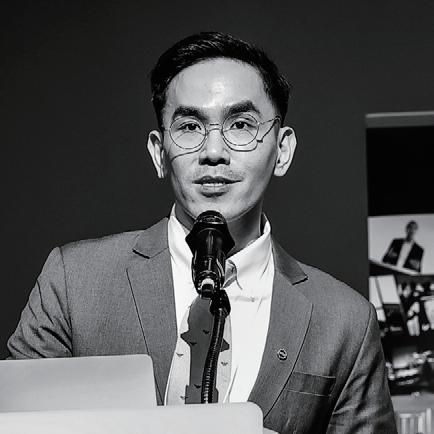
Apipol Sae-Tung is an Academic Coordinator at IAFOR, where he contributes to the development and execution of academicrelated content and activities. He works closely with the Forum’s partner institutions and coordinates IAFOR’s Global Fellowship Programme. His recent activities include mediating conference reports for the Forum’s international conference programme and facilitating the IAFOR Undergraduate Research Symposium (IURS).
Mr Sae-Tung began his career as a Program Coordinator for the Faculty of Political Science at Chulalongkorn University, Thailand. He was awarded the Japanese Government’s MEXT Research Scholarship and is currently pursuing a PhD at the Graduate School of International Development, Nagoya University, Japan. His research focuses on government and policy analysis, particularly on authoritarian regimes. Mr Sae-Tung holds an MA in International Relations and Diplomacy from Thammasat University, Thailand, where he studied foreign policy analysis and Thailand-China relations. He also holds a BA in History from the same institution.


14:00-15:00 | Subaru Room (5F) Tuesday Poster Session 1
Abstracts appear as originally submitted by the author. Any spelling, grammatical, or typographical errors are those of the author.
14:00-15:00 |
40119 | Designing for Intimacy: Couples’ Expectations of Experiential Hospitality in Short-Stay Hotels
Jas Elyn Cruz Serrano, National University Manila, Philippines
Angela Gabrielle Loreno, National University Manila, Philippines
This study investigates the expectations of couples regarding experiential hospitality in short-stay hotels within Metro Manila. While such accommodations are often chosen for privacy, affordability, and convenience, little is known about how architectural and service elements influence user satisfaction. Using the framework of experiential hospitality, the study examines five key components: Atmosphere and Ambiance, Privacy and Safety, Spatial Flow and User Comfort, Emotional Impact and Memory, and Service Interaction. A mixed-methods approach was employed, combining survey responses from 101 individuals with site observations conducted at Hotel Sogo and comparable establishments. Quantitative data were analyzed using descriptive statistics, regression analysis, and Tukey pairwise comparisons to determine the influence of each component on couples’ expectations. Site observations provided contextual understanding of how physical features aligned—or failed to align—with users’ experiential needs. Findings indicate that Service Interaction had the highest influence on user expectations, followed closely by Emotional Impact and Privacy. Meanwhile, Atmosphere and Ambiance, while still important, ranked lowest among the components. These results suggest that human-centered service and emotionally resonant design features are critical to shaping positive short-stay hotel experiences. The study concludes that experiential hospitality principles, when applied to the design of short-stay accommodations, can inform more meaningful, inclusive, and usercentered architectural strategies. These findings are relevant to architects, interior designers, and hospitality operators aiming to elevate the emotional and spatial quality of intimacy-driven spaces.
40113 | Assessing the Courthouse Spatial Configuration and Its Impact on Child-Friendly and Trauma-Sensitive Judiciary: A Study of Family Courts Within Regional Trial Court (RTC) Branches in Metro Manila
Jonnel Caber Sadian, National University Manila, Philippines
Angela Gabrielle Loreno, National University Manila, Philippines
This study assesses how the spatial configuration of Family Courts within Regional Trial Court (RTC) branches in Metro Manila impacts the effectiveness of child-friendly and trauma-sensitive judiciary, it seeks to determine if these settings are appropriate for a childfriendly and trauma-informed judiciary. The study used a qualitative research methodology, conducting semi-structured interviews with professional in law, psychology, and architecture, as well as observational studies at Family Court branches in Quezon City and Makati City. The study evaluates at the importance of architectural characteristics including courtroom layout, circulation, seating arrangement, and spatial hierarchy impact children’s participation and safety. It integrates the Trauma-Informed Design, Child-Friendly Justice, and Courtroom Spatial Configuration, forming the basis for a Child-Responsive Court model. Observational checklists and interview questionnaires were created utilizing the child-friendly court conceptual framework. The findings show that traditional courtroom layouts frequently overlook children’s spatial requirements. Poor circulation path, shared facilities with regular courts, and multipurpose playrooms develops re-traumatization. Due to no separate entrances, exits, or waiting spaces, children often encounter intimidating figures such as the accused, opposing parties and high-profile individuals. To prevent psychological trauma, judges and court users use improvisations such as shifting seats, video testimony and shielding. This concludes that Family Court spatial configuration plays a crucial role in effectiveness of child-friendly and trauma-sensitive judiciary. Thus, the researcher recommends a new typology of Children’s Court which separates child-related cases to regular high-profile cases that potentially improves the child victim’s way to justice.
Commercial Space
Yejin Kim, University of Utah Asia Campus, United States
Rapid urban development in South Korea’s new towns, such as Gimpo, Goyang, and Incheon, has produced excessive commercial space, leading to high vacancy rates and declining community engagement. These “ghost towns” reflect both economic stagnation and urban underutilization. This study examines whether urban smart farming can provide a sustainable solution by transforming vacant commercial areas into productive, vibrant urban spaces. Specifically, it focuses on the Gimpo Yangchon Knowledge Industrial Complex, where surplus industrial and commercial zones offer potential for innovative reuse. The research adopts a multi-method approach. First, a literature review analyzes prior studies on vacancy rates and the capacity of smart farms to regenerate urban areas. Second, a case study of Gimpo Yangchon investigates current vacancy patterns and infrastructure suitability for conversion. Data collection includes quantitative interviews with local government officials, urban planners, and businesses to assess challenges and opportunities in implementing smart farms. Additionally, GIS mapping evaluates the spatial feasibility of adapting vacant commercial buildings by considering size, infrastructure readiness (e.g., water and electricity), and accessibility. Findings from comparative cases in Seoul and Beijing demonstrate the benefits of vertical farming, high visibility, and community integration. Applied to Gimpo Yangchon, these models suggest that smart farming could reduce vacancy rates, provide local food, and strengthen community identity. The study concludes that innovative urban farming initiatives can bridge the gap between land use, zoning, and sustainability. By reimagining unused commercial areas, smart farms can play a critical role in revitalizing declining urban zones and fostering resilient, environmentally friendly cities.
40112 | Exploring Nighttime Urbanism: A Study of Urban Space Usability for Homeless Individuals in Cubao, Quezon City
Keith Cyrel Lee Palles, National University Manila, Philippines
Angela Gabrielle Loreno, National University Manila, Philippines
This study examines how nighttime urban spaces in Cubao, Quezon City, affect the lived experiences of homeless individuals and how these spaces can be redesigned to promote social equity. While Cubao is vibrant during the day, its public areas become hostile and exclusionary at night for those without shelter. Grounded on Henri Lefebvre’s "Theory of the Production of Space", Jan Gehl’s "Life between Buildings", and Don Mitchell’s "Right to the City", the study employs non-participant observation, policy analysis, and interviews to assess spatial usability, exclusionary design, and governance. Findings reveal that homeless individuals face significant challenges, including poor lighting, exposure to the elements, lack of sanitation, displacement, surveillance, and stigma. Hostile design features, along with curfews and ordinances, criminalize presence rather than promote inclusion. These conditions reflect a broader system of spatial cleansing and social erasure. Rather than a fixed shelter, a flexible, participatory design intervention grounded in care and cohabitation that offers a public space model that supports nighttime rest, gathering, and dignity for homeless individuals is recommended. It challenges the idea that public space is only for the housed and orderly, reframing it as a shared commons for all. By bridging design, policy, and lived experience, the study advances discussions on spatial justice and calls for a more inclusive and humane urban night.
40111 | Designing Learning Spaces for Philippine Met Institutions: An Analysis of Perceived Architectural Influence on Maritime Education and Training
Renante Macalindong, National University Manila, Philippines
Angela Gabrielle C Loreno, National University Manila, Philippines
This study examines how architectural design influences experiential learning in Maritime Education and Training (MET) institutions in the Philippines, using Kolb’s Experiential Learning Theory (ELT) as a framework. As the country continues to supply a significant portion of the global seafaring workforce, the effectiveness of MET programs depends not only on curriculum and simulation technologies but also on the spatial quality of learning environments. Through a mixed-methods approach‚—including physical mapping, student and graduate surveys, and stakeholder interviews‚—the study evaluates how campus facilities support the four ELT stages: Concrete Experience (CE), Reflective Observation (RO), Abstract Conceptualization (AC), and Active Experimentation (AE). Findings show that CE and AE are strongly supported through simulation labs, workshops, and training vessels, though gaps remain in authentic real-world immersion. RO is moderately addressed through lecture halls and libraries, but the absence of informal, collaborative, and reflective spaces limits opportunities for deeper cognitive processing. AC is supported through theoretical instruction, yet graduates noted a disconnect between classroom concepts and their real-world application. Spatial analysis also revealed circulation issues in AE zones, affecting the continuity of hands-on learning. The study concludes that while regulatory standards ensure baseline facilities, intentional architectural planning is essential to support all phases of experiential learning. It recommends integrating reflective and immersive spaces, aligning theoretical and practical areas, and improving spatial flow to foster a more holistic, learner-centered environment. These insights may guide future campus designs for MET institutions and other practice-oriented educational settings.
40217 | Analysis of Animated Character’s Identity Development in Another World: Media That Connect Ponyo and Human World
Taiyo Yamamoto, Dokkyo University, Japan
Adam Gyenes, Dokkyo University, Japan
Studio Ghibli’s film “Ponyo”’s main character is a mysterious creature Miyazaki created which is a mermaid-like creature that turns into a human, and the human world is depicted as the other world for Ponyo. Thus, the human world and the world under the sea are in binary opposition in this analysis. In Ponyo’s identity development process, there are media that connect Ponyo and the human world: physical mechanisms that act as mediate for Ponyo to know about the human world, to identify herself, and also for humans to know about Ponyo, and are thus relevant not only to Ponyo’s personal identity, but her social identity as well. This poster presentation explores how Ponyo develops her identity in the human world through the film from a context of intercultural communication. It focuses on 3 perspectives. First, taking Ponyo’s perspective to analyze her personal identity development. Secondly, taking other characters’ perspective to analyze Ponyo’s social identity. Finally, taking the perspective of multi-cultural audiences to analyze how they identify with or other Ponyo. Media that appear in the film are becoming tools for Ponyo to transcend the border between two worlds, and this analysis attempts to show an animated character’s identity development by seeing from these 3 perspectives.
40186 | Information Deficiency on Social Media and Career Indecision Among Undergraduates: The Case of Instagram
Pei Han Huang, National Taiwan Normal University, Taiwan
In an era where information appears ubiquitous, undergraduates often face the dual challenge of “information anxiety” and “career indecision.” For many students, Instagram has become a primary channel for information acquisition; however, its entertainment-driven and algorithmic nature frequently produces a paradoxical condition: information overload accompanied by a lack of effective careerrelated resources. This study explores how such information deficiency within Instagram’s ecosystem influences undergraduates’ career decision-making and undermines their career decision self-efficacy (CDSE). Employing a literature review, the research focuses on undergraduates aged 18–22, analyzing the difficulties they encounter in fragmented information environments. Theoretically, this study extends Gati et al.’s (1996) framework of career indecision into the context of social media, illustrating how information deficiency manifests in new ways within seemingly information-rich but unfocused settings. Practically, the study aims to provide undergraduates with a reflective perspective, encouraging them to actively pursue strategies to break free from the “information cocoon” and ultimately strengthen their confidence in career decision-making.
40147 | Science Communication Efforts in Coal-Free Negros Movement in Negros Occidental, Philippines
Jan Andrew Gelera, West Visayas State University, Philippines
In 2019, different sectoral groups led by the Youth for Climate Hope lobbied for Coal-Free Negros to oppose San Miguel Corporation’s proposed 300-megawatt coal-fired power plant in San Carlos City, Negros Occidental. Youth groups sat down with public officials to communicate the effects of coal in Negros and protested the proposal with various advocates in front of the provincial office. This study examines the internal and external science communication efforts during the Coal-Free Negros Movement (CFNM) in Negros Occidental, Philippines. This study employed a mixed method approach, implying an Exploratory Sequential Design; a case study and content analysis studying the CFNM last 2018 until 2019, and quantifying the identified Science Communication efforts. Data came from key informant interviews with pioneers of the movement, and document review of online articles discussing the campaign. Additionally, the efforts were mapped to the four models of science communication: Knowledge Deficit Model, Contextual Model, Lay Expertise Model, and Public Engagement or Participatory Model. Results show that the movement’s success had elements from all models of science communication, weighing heavily on the characteristics of the participatory approach. Subsequently, media outlets framed the campaign in a very neutral manner -featuring the opinions and positions of multiple parties, and lacked scientific consequences. Mapping science communication in a successful social mobilization engineered a framework that not only makes sense of the climate movements in Negros, but of communicating scientific and technical information which can be applied by different youth groups lobbying for climate justice in the country.
40126 | Representing Older People and Ageing in Silver Tourism Marketing: A Case Study of Taiwanese Travel Agency Websites
Chieh Yu Jung, National Ping-Tung University of Science and Technology, Taiwan
Chin-Hui Chen, National Ping-Tung University of Science and Technology, Taiwan
As Taiwan enters a super-aged society, silver tourism has become an increasingly important focus, supported by the 2024 launch of the “Phoenix/Golden Years Age-Friendly Travel Program Certification” (凰金樂齡遊程認證) in Taiwan. This study analyzes visual and textual marketing messages from nine Taiwanese travel agency websites, collected in July 2025 using discourse analysis. The research aims to examine how agencies target older consumers by slogans, age-related terms (e.g., 銀髮, 樂齡), and the visual portrayal of seniors. Findings reveal a dominant usage of the “Golden Ager” stereotype, presenting seniors in an active, healthy, and sociable way. Visuals often depict older adults in couples or groups engaging in outdoor activities, reinforcing the ideals of active aging. However, age representation lacks diversity, with limited portrayals of other aging experiences. Some websites also fail to reference older travelers in either language or imagery explicitly. This study highlights both the strengths and shortcomings of Taiwan’s silver tourism marketing, emphasizing the need for more inclusive, age-conscious, and policy-aligned communication strategies.
40218 | Creativity, Disorder and the Neurodivergent Mind
Adrita Mitra, University of Calcutta, India
The age-old belief that "disorder" equals deficiency is strongly challenged by the link between neurodiversity and creativity. This paper tries to redefine cognitive difference as a special order — a system that flows through unconventional perception, thought, and artistic endeavours. Referring to the neurodiversity model (Singer, 2016) and recent studies on ADHD, Autism Spectrum Disorder, and Dyslexia, it contradicts the universal notion of “distraction”, “inflexibility”, or “abnormality” may in fact be expressions of unique creative disposition and heightened divergent thinking. Craig & Baron-Cohen (1999) inferred autistic adults often show higher perceptual awareness, visual imagination, and sensitivity to detail— skills normally associated with sharp aesthetic or analytical perception. This paper considers real-world accounts (The Times of India, 8th March 2024) of growing visibility among neurodivergent Indians using art, music, and literature as forms of expression and action. This trend is exemplified by Bollywood Aamir Khan’s recent film, "Sitaare Zameen Par" (2025), which brings the neurodiversity discussion into mainstream Indian cinema by embracing the creativity of difference. A qualitative observation of these stories represents creativity in neurodivergents’ minds as an adaptation strategy that enhances psychological well-being and identity formation. Hence, neurodivergence is not only a required cognitive diversity but also a force for social and cultural evolution. This necessary contribution, validated by psychology, education, and lived experience, enhances what it means to think, feel, and create.
40154 | The Reason Behind Chinese Young Girls’ Aesthetic Non-suicidal Self-injury on the Internet Xinyuan Hua, Wenzhou Kean University, China
On Chinese social media platforms in recent years, some young girls have begun to present non-suicidal self-harm in a "cute" or "aesthetic" way, a phenomenon that has attracted widespread attention. This study aims to explore the complex motives behind online aestheticized NSSI to enhance understanding and reduce discrimination and stigmatization. This study investigated individual psychological states, Internet usage, perceptions of non-suicidal self-harm, the purposes, methods, subjective influences of taking such behaviors, as well as how specific cultural groups and peers influence aestheticization behaviors. A mixed method and primary data have been utilized in this research study. Using purposive sampling and snowball sampling, 64 young women were selected from three mainstream social media platforms to fill out questionnaires, among whom 57 participated in online interviews. The researcher found out that the aestheticization of self-harming behaviors by adolescent girls not only has the motives of emotion regulation and identity construction but also is influenced by multiple factors from peer groups, reflecting the complex psychological and social interaction mechanisms in online subculture. The outcome of the study can also be helpful for future researchers as a basis for similar areas. Relevant experts, teachers, and parents can refer to the results of this study to adjust their education methods and intervention strategies.
40178 | Prevalence of Cultic Leadership in Pakistani Politics and the Consequential Effects on Mental Health. Madiha Iftikhar, Virtual University Of Pakistan, Pakistan
From 2018 to 2025, Politicians in Pakistan presented different manifestos to citizens, many of the specific policies proposed were either implemented with little to no success or overlooked. Political parties such as Tehreek-e-Insaaf (PTI), N-league have and PPP (especially under the reign of Zia-ul-Haq) used techniques such as political polarization, ostracization to gain favor from the general public Simultaneously, using censorship and monetary bribes to create a false positive image in the public eye. This phenomenon has also been observed and studied by psychologists in cults, specifically the ostracization of its members and the charismatic “savior” or “messiah” that leads the group. These parallels aren’t a recent phenomenon and can be traced back to the early beginnings of Pakistan with its founder, Muhammad ali jinnah, revered in Pakistan as Quaid-e-Azam (“Great leader”) or Baba-e-Qaum (“Father of the nation”). This paper explores the psychology, history and socio-economic reasoning behind Pakistan’s prevalence towards cultic leaders and fundamental flaws in its constitution that demand these characteristics. It illustrates why these political parties (whether consciously or unconsciously) deploy tactics prevalent in cults, pre and post elections, while providing insight into the effect of this repetitive occurrence on social paradigms and the mental health of people living within it. It also cross-compares Pakistani and Malaysian constitutions and the proceeding differences in their respective political environments.
40101 | Exploring the Consequences of the Universal Question "What If" in the Context of Intrapersonal Communication Dilemmas
Jessica Joyce Quizon Perez, De la Salle Lipa, Philippines
Simone Peter Garcia, De la Salle Lipa, Philippines
Kent Jeric Bunquin, De la Salle Lipa, Philippines
"What-if" thinking is a common cognitive pattern that can arise from uncertainties about potential alternative outcomes in life. This thinking offers insights into the role of intrapersonal communication in managing life’s uncertainties. Specifically, the study determined the origin of "What If" questions, identified the consequences of having "What If" questions; defined intrapersonal communication in the context of self-discrepancy; and assessed the significance of consequences to a person’s intrapersonal communication. The study based its theoretical framework on Edward Torry Higgins’ theoretical framework titled Theory of Self-discrepancy of Communication. Pertinent to the study’s qualitative method, a mixed-method approach was utilized where data were gathered through surveys and a key informant interview. Analysis of the responses indicates that "what-if" questions can often lead to regret and dissatisfaction due to comparisons between actual outcomes and ideal scenarios. However, when managed constructively, these "what-if" scenarios can foster selfawareness and alignment with personal values. The duality of these effects highlights the complex role of intrapersonal communication in shaping one’s identity and life choices. On this basis, it is recommended that "what-if" scenarios are treated as opportunities for constructive reflection and problem-solving. Further research is needed to identify strategies to mitigate the negative effects of "what-if questions."
40210 | Hardship as a Determinant of Psychological Resilience: A Systematic Review
Snigdha Muddam, Mahindra University, India
Chaitanya Solanki, Mahindra University, India
Atulya Venkatesh Iyer, Mahindra University, India
Ananya Swargiary, Mahindra University, India
Mahima Das, Mahindra University, India
The relationship between hardship and resilience represents a critical area of inquiry within psychology and the social sciences, yet existing research remains fragmented across populations, adversity types, and methods. This systematic review synthesizes empirical evidence to address a central question: how does exposure to hardship influence the development and expression of psychological resilience? Guided by the PRISMA framework, a systematic search across multiple databases identified 223 records. After screening based on strict inclusion criteria—requiring empirical studies that examined resilience as a dynamic process in response to measurable hardship—14 studies were included for final synthesis. These encompassed animal models, clinical populations, adolescents, veterans, migrants, and national communities, using experimental, longitudinal, and mixed-methods designs. Findings highlight a complex duality. Hardship can undermine resilience, producing chronic distress, hidden physiological costs (“skindeep resilience”), and erosion under prolonged adversity. At the same time, hardship may catalyze growth: stress inoculation and manageable challenges, whether in early life or through structured interventions, can build durable emotional and physiological resilience. The nature of adversity is decisive—challenge stressors promote adaptation, whereas hindrance stressors deplete resilience. Contextual influences such as community support, trauma type, and personal interpretation shape outcomes, often yielding trade-offs rather than simple trajectories.This review concludes that resilience is not a fixed trait but a dynamic, malleable process open to intervention. By consolidating fragmented evidence, it offers a framework for designing strategies to strengthen resilience in ways that are sustainable, equitable, and responsive to diverse forms of hardship.
40099 | I see it, I like it, I buy it: Delving into the Impulsive Buying Behavior Among Adolescents
Debbie Rae Barcebal, Catholic Central School of Tabaco, Albay Inc., Philippines
Augusto Abril, Catholic Central School of Tabaco, Albay Inc., Philippines
This research paper delved into impulsive buying behavior among adolescents, a rising concern in today’s consumer-driven society. Impulsive buying is characterized by spontaneous, unplanned purchases triggered by external stimuli or internal emotional states, often without consideration of the consequences. Due to their developmental stage, adolescents are particularly susceptible to such behaviors as they navigate identity formation, peer influence, and heightened emotional sensitivity. The study aimed to identify the key psychological, social, and environmental factors contributing to adolescents’ impulsive buying. It examined the role of emotional regulation, self-esteem, instant gratification, external influences such as peer pressure, family dynamics, advertising, and the pervasive impact of social media and societal expectations. The research gathered data from seven adolescents aged 15-20 through a phenomenological qualitative approach to understanding their motivations, attitudes, and experiences related to impulsive purchasing. Findings revealed that emotional triggers such as negative emotions, childhood deprivation, the desire for social acceptance, the objective of obtaining one’s ideal self, tempting advertisements, and self-entitlement significantly impact adolescents’ buying decisions. Additionally, a lack of financial literacy and parental guidance often exacerbates the tendency to spend impulsively. The paper concluded that adolescents may develop financial awareness and self-control by emphasizing the importance of interventions and educational programs. It recommends collaborating between schools, families, and media platforms to create supportive environments encouraging mindful consumption. The insights from this study serve as a foundation for future research and policy development focused on responsible consumer behavior among the youth.
40172 | Optimizing Study Schedules for Maximum Efficiency and Focus
Kazuma
Tamagawa, Musashino University, Japan
This research proposes a mathematical model using Linear Programming to manage an individual’s daily study schedule by incorporating the concept of concentration. The study is motivated by the limitation of conventional scheduling methods, which often function as simple to-do lists, failing to account for the dynamic nature of a user’s concentration levels. To address this, our model introduces a "concentration score," a variable dependent on both the task type and the time of day. This framework allows for the generation of a schedule that maximizes individual performance within a finite timeframe, moving beyond mere time allocation. The methodology involves segmenting the day into 10-minute blocks, to which tasks, breaks, or meals are assigned. A minimum required duration is set for each task to guarantee the completion of all necessary work. The model’s objective is to maximize the aggregate sum of the concentration scores yielded by the activities in each time block. This facilitates a comprehensive optimization of the schedule, considering not just task sequencing but also the optimal timing of restorative activities like breaks and meals. Although the model presented is foundational, it offers significant potential for future development. By establishing a more precise method for quantifying the "concentration score" and dynamically incorporating the subsequent effects of breaks and meals, the system can be evolved into a highly accurate and adaptive scheduling tool.
40135 | Rotational DNA Origami Device to Store Mechanical Energy
Aarish Chavan, Massachusetts Bay Community College, United States
Rafael Carrascosa Marzo, Massachusetts Bay Community College, United States
The proposed DNA origami-based device is a nanorobotic arm designed to store mechanical energy by winding up a DNA ‘spring’. This research contributes to the development of spring-loaded mechanical nanotechnology for energy storage. It uses a DNA arm and base to store mechanical energy and utilize it when needed. Given that it is a prototype concept, there are many allied challenges due to technological advancements. This includes manufacturing processes associated with the design of such mechanisms, potentially limited mechanical strength, and non-optimal storage efficiency. For now, this design is limited by the load capacity of its prototype. Furthermore, in this study, stability tests of the components are undertaken using Oxview, upon which a few bond separations within DNA are recorded.
40165 | Analysis of the Takakusu Junjiro Diary Based on Text Mining
Haruya Sakai, Musashino University, Japan
This study analyzes the diaries of Junjiro Takakusu, an international Buddhist scholar and founder of Musashino University, using text mining to objectively and quantitatively understand his activities and interests. The analysis covers six years of his handwritten diaries between 1920 and 1933. After converting the diaries into text data, the research conducted frequency analysis and co-occurrence network analysis. The findings revealed that a high volume of diary entries exists even for years with few events listed in official chronologies, such as 1928, suggesting text mining can supplement historical records.Frequency analysis identified key locations related to his work, such as "Toyo University," where he served as president, and "Musashino Women’s Gakuin," the school he founded. The analysis also highlighted important people in his life, including his wife "Shimoko," "Ms. Komatsu," who was involved in a construction project, and "Genmyo Ono," an academic collaborator.Furthermore, co-occurrence network analysis visualized strong connections between specific places, like "Musashino" and "Toyo University," and between individuals, such as "Kobayashi" and "Maekawa".The study concludes that text mining is a valid method for uncovering the networks of activities and personal relationships of historical figures. Future work includes analyzing the remaining diaries and developing natural language processing techniques applicable to historical Japanese texts containing archaic script.
Karima Boussetta, National Institute of Applied Science and Technology, Tunisia
Introduction: This study explores the potential of artificial intelligence (AI)-powered assistive robots in enhancing educational outcomes for children with neurodevelopmental disorders, such as autism spectrum disorder (ASD) and ADHD. As inclusive education becomes increasingly important, there is a growing need for innovative tools to support diverse learning needs. Methods: We designed and implemented a prototype social robot using a Raspberry Pi, speech recognition modules, and custom-built AI models for emotion and attention detection. A pilot study was conducted in collaboration with a local special education center, involving 10 children aged 6-10. The robot was programmed to provide personalized feedback, interactive tasks, and emotional support through visual and auditory cues. Results: Preliminary results show improved engagement and task completion rates among participants. Attention span increased by an average of 27%, and social interaction metrics improved significantly during guided educational activities with the robot. Discussion: The findings suggest that AI-powered assistive robots can serve as effective tools in supporting the learning and emotional needs of children with neurodevelopmental disorders. Further research is needed to explore long-term effects and scalability in diverse educational settings.
Koei Mizuno, Musashino University, Japan
This study proposes a novel method for optimizing marine debris collection routes in Tokyo Bay, addressing the urgent need for efficient solutions to the severe environmental and ecological impact of large quantities of marine debris with limited resources. Conventional marine debris collection methods often overlook dynamic natural conditions such as tidal currents and wind direction, leading to inefficient route planning. To overcome this inefficiency, our research first develops a detailed mathematical model representing the distribution and movement patterns of marine debris. This model is based on diverse information, including historical meteorological and oceanographic data, as well as actual debris drift tendencies. Building upon this model, we applied an optimization method similar to the Traveling Salesperson Problem to design collection routes. The primary objective of this optimization is to minimize the travel distance of collection vessels while maximizing the amount of collected debris. We also incorporated practical constraints reflecting real-world collection operations, such as prioritizing collection in high-density areas. This means selecting collection points such that the total amount of target debris meets a predefined minimum standard. Furthermore, we integrated realistic elements into the model, such as the dynamic change in travel costs between points due to tidal current effects, and also incorporated wind direction and drift tendencies. This approach allows for a more realistic and accurate route design. The optimization method proposed in this study is expected to contribute to a dramatic reduction in travel distance during collection operations and a significant improvement in collection efficiency.
40134 | Efficacy of Tumor Infiltrating Lymphocytes (TIL) in Advanced Melanoma: A Systematic Review
Kareem Suleiman, University of South Florida, United States
Faris Hassan, University of South Florida, United States
Faizan Mohammed, University of South Florida, United States
Isai Torres, University of South Florida, United States
Anas Kartoumah, University of South Florida, United States
Arya Thakkar, University of South Florida, United States
Tumor-infiltrating lymphocytes (TILs) are essential for immune responses in melanoma, with higher TIL grades linked to better survival and treatment outcomes. They play a crucial role in adoptive cell therapy (ACT) for advanced melanoma, offering hope for patients resistant to other treatments. This study evaluates the effectiveness and challenges of TIL therapy in melanoma, highlighting its clinical impact while addressing limitations such as immune resistance, tumor heterogeneity, and logistical hurdles. A systematic review of primary and secondary sources from PubMed, including clinical trials and experimental studies, was conducted. Key outcomes such as response rates, progression-free survival (PFS), and overall survival (OS) were analyzed. The review also explored the role of TIL grades and their relationship to immune checkpoint inhibitors (ICIs). TIL therapy has demonstrated significant clinical benefits in metastatic melanoma, with response rates up to 72% and durable remissions observed in some patients. Studies highlight TILs as prognostic biomarkers, linking higher TIL grades to better survival and treatment responses. However, limitations such as immune evasion and tumor heterogeneity impact outcomes. Emerging strategies, including neoantigen-specific T-cell reactivity and combination therapies, show promise in enhancing efficacy. TIL therapy offers transformative potential for treating advanced melanoma, particularly in patients resistant to standard therapies. Future efforts should focus on refining TIL protocols, optimizing combination therapies, and improving scalability to make this approach more accessible and effective. Addressing these challenges will pave the way for TIL therapy to become a personalized standard of care in melanoma and other solid tumors.
Yuta Tatebayashi, Musashino
University, Japan
This research aims to develop a system for automatically generating optimal emergency transport plans using mathematical optimization. Conventional emergency response protocols typically dispatch patients to the nearest medical facility. This approach, however, often fails to consider dynamic factors such as hospital capacity, the availability of specialized treatments, and ambulance fleet status. This can result in significant delays in patient reception and an inequitable distribution of patient load among hospitals. To mitigate these challenges, we formulated a mathematical model to optimize the allocation of patients to hospitals and ambulances. The model’s objective is to minimize the total transport time, defined as the duration from ambulance dispatch to hospital arrival. The model is governed by three critical constraints to ensure practical applicability: 1) each patient is transported exactly once; 2) hospital patient intake does not exceed capacity; and 3) the receiving hospital is equipped to provide the required medical care. The model was implemented using Python with the PuLP optimization library. Simulations conducted on small-scale datasets validated the model’s ability to derive optimal routing solutions while satisfying all specified constraints. The proposed system serves as a scalable foundation for a more sophisticated dispatch framework. Future work will focus on integrating additional variables, such as real-time traffic data, fleet size adjustments, patient triage levels, and equity-focused routing rules. Through these enhancements, we aim to contribute to the development of a next-generation emergency medical system designed to improve patient outcomes.
40199 | Project Surya Shakti: Advancing Solar in Ap Phanipriya Kondala, Alliance University, India
Project Surya Shakti aims to critically examine the potential and challenges of advancing solar energy in Andhra Pradesh by evaluating two flagship government initiatives—PM Surya Ghar Muft Bijli Yojana and PM-KUSUM. Both schemes are designed to accelerate the adoption of renewable energy, reduce dependence on conventional power sources, provide affordable electricity to households, and empower farmers through decentralized solar solutions. While their objectives align with India’s renewable energy targets and sustainable development goals, practical implementation at the grassroots level reveals significant barriers. Key challenges identified include limited awareness among rural households, high upfront costs, inconsistent financing support, infrastructural bottlenecks, and delays in grid connectivity. Farmers under PM-KUSUM often face difficulties in accessing subsidies and navigating bureaucratic procedures, while households under PM Surya Ghar struggle with affordability and maintenance concerns. These gaps reduce the schemes’ intended socioeconomic impact, particularly for marginalized groups that stand to benefit the most from clean energy access. This project combines policy analysis with field-based insights to assess how effectively these schemes are meeting their objectives in Andhra Pradesh. It further evaluates their role in addressing energy security, reducing electricity expenditure, and supporting climate resilience. Based on findings, the project proposes targeted recommendations, including enhanced awareness campaigns, simplified subsidy mechanisms, affordable financing models, and stronger institutional coordination. By addressing these challenges, Project Surya Shakti envisions a pathway to transform solar energy adoption in Andhra Pradesh, thereby promoting sustainable growth, empowering farmers, and advancing India’s renewable energy transition.
40183 | Assessing Blue Carbon Sequestration in Songdo Through AI: Comparative Analysis With Similar Coastal Environments and Future Projections
Seungeun Choi, George Mason University Korea, South Korea
Seongbin Park, George Mason University Korea, South Korea
Blue carbon ecosystems, including tidal flats, salt marshes, and seagrass meadows, are essential for mitigating climate change by capturing and storing atmospheric carbon. However, large-scale urban reclamation, as seen in Songdo, Incheon, has significantly disrupted natural habitats and reduced their sequestration potential. This study aims to assess the current and future carbon storage capacity of Songdo’s blue carbon ecosystems and to compare these findings with similar coastal environments in the Asia-Pacific region. Using remote sensing data, NDVI, and elevation models, we evaluated vegetation health and biomass distribution, while predictive machine learning models projected sequestration scenarios under various restoration and climate pathways. The analysis revealed that reclamation has substantially diminished Songdo’s natural carbon storage, though remnant tidal flats and salt marshes still exhibit moderate potential. Moreover, AI-based projections suggest that targeted restoration in high-priority zones could enhance sequestration efficiency by over 30% compared to the present baseline. These results highlight the urgent need to integrate AI-powered monitoring and ecological restoration into urban planning and climate adaptation strategies. By presenting Songdo as a scalable case study, this research offers actionable insights for coastal cities worldwide striving to meet the global carbon neutrality target by 2050.
40117 | Smart and Sustainable: Regionally Adaptive Flood Resilience Strategies in Urban, Coastal, and Inland Cities of South Korea
Serene Kwon, University of Utah, United States Hyein Kim, University of Utah, United States
South Korea is increasingly exposed to flood risks due to more frequent and intense rainfall events, especially during the summer monsoon season. The impact varies on different cities-in urban developed cities like Seoul, dense development and a high percentage of impermeable surfaces contribute to urban flooding and overwhelmed drainage systems while coastal cities such as Busan and Incheon face compound risks from typhoons, storm surges, and sea-level rise and inland cities like Jeonju and Cheongju often experience river overflows but lack direct access to the sea, limiting their drainage capacity. This study examines flood exposure and recovery patterns across urban, coastal, and inland regions to identify vulnerabilities and propose adaptive strategies using green infrastructure, spatial analysis, and smart technologies. Public perceptions and local experiences are included to enhance practicality. GIS-based mapping integrates rainfall, elevation, impervious surface, and drainage data to define risk zones. A risk matrix is built for each region using historical disaster records. Case studies—such as Seoul’s 2010 and 2022 floods, Incheon’s 2020 coastal flood, and Cheongju’s 2023 overflow—illustrate changes in recovery capacity and gaps that remain. Surveys with residents provide insight into awareness, past experiences, and attitudes toward sustainable solutions. Global models from Rotterdam, Tokyo, and New Orleans inform region-specific proposals, including permeable pavements, smart retention systems, coastal buffer parks, and river-integrated green corridors. Overall, the research offers a regionally adaptive framework for flood resilience that can guide design and policy in South Korea and other monsoon-prone nations.
40208 | School Health Initiatives: An Assessment Toward Policy Framework Development For Health Promotion
Jairus Neil Lontoc Diaz, Columban College Inc., Philippines
Christian Delos Santos, Columban College Inc., Philippines
Yvan Ray Yanto, Columban College Inc., Philippines
Rey Eata Enciso, Columban College Inc., Philippines
Health-promoting schools (HPS) foster students’ physical, mental, and social well-being through integrated efforts in policy, environment, education, and community engagement. This study evaluated the health initiatives of Columban College, Inc., a private institution in the Philippines, by the World Health Organization’s Health Promotion Strategy (HPS) framework. It assessed student participation, awareness, and access to health services, alongside stakeholder perceptions across six pillars: healthy school policies, physical environment, social environment, health education, parent-school partnerships, and access to health services. A convergent parallel mixed-methods design was employed, involving quantitative surveys and qualitative interviews administered to 3rd and 4th-year students. Statistical analyses included frequency, percentage, mean, ANOVA, Pearson’s correlation, and multiple regression; qualitative data were analyzed thematically. Findings revealed moderate student engagement and highlighted perceptual gaps between students and administrators. Institutional health policies and physical environments were positively rated; however, weak parental involvement and limited accessibility to health services were identified as critical areas for development. Regression analysis identified key predictors of access to health services. Based on the findings, a policy guideline framework was proposed to enhance the implementation of HPS in private institutions. The study emphasizes inclusive, evidence-based health promotion strategies aligned with international standards, contributing to a localized understanding of sustainable school-based health systems.
40200 | Policy Proposal for a Statewide Early Childhood Care and Education (ECCE) Framework for Children Aged 3 to 6 in Karnataka Chukki Anagha C, Alliance University, India
Introduction: Early Childhood Care and Education (ECCE) is crucial for the cognitive, emotional, and physical development of children aged 3–6 years. The High Court of Karnataka’s judgment in WP No. 24930/2024 (April 23, 2025) emphasized the pivotal role of Anganwadi Centres (AWCs) in delivering ECCE and nutritional support, quashing government orders for pre-primary schools that violated the National Food Security Act (NFSA) 2013, Poshan 2.0 Guidelines, and National Education Policy (NEP) 2020. This study proposes a policy framework to strengthen AWCs as primary ECCE hubs in Karnataka, ensuring compliance with statutory mandates and universal access to quality education and nutrition for approximately 30 lakh children. Methods: A mixed-methods approach was used, including a statewide assessment of 65,911 AWCs serving 13,58,403 children, stakeholder consultations with the Department of Women and Child Development, and analysis of NFSA, Poshan 2.0, and NEP 2020 policies. Data collection involved infrastructure audits, surveys on AWW training, and nutritional compliance reviews, with a focus on disadvantaged districts like Kalyan Karnataka. Results: Findings indicate that 30% of AWCs lack child-friendly infrastructure, 40% face challenges meeting NFSA nutritional standards, and most AWWs require training in ECCE pedagogy to align with NEP 2020. Discussion: The proposed policy recommends upgrading AWC infrastructure, standardizing AWW training in ECCE, enhancing nutritional delivery, facilitating phased co-location with schools, and strengthening monitoring systems. This framework aims to transform AWCs into modern ECCE hubs, ensuring compliance with national mandates and improving developmental outcomes for children across Karnataka.
40121 | Navigating Treatment Challenges: The Efficacy of Substance Abuse Treatment Options for Unhoused Populations
Anas Kartoumah, University of South Florida, United States
Sonya Patel, University of South Florida, United States
Stephanie Krzypkowski, University of South Florida, United States
Avery Giffen, University of South Florida, United States
Emily Hoffman, University of South Florida, United States
Sabrina Atiq, University of South Florida, United States
Introduction: Unhoused populations experience substance use disorders at rates far higher than the general public, yet they face unique barriers to completing rehabilitation programs. This systematic review evaluates which treatment models are most effective for unhoused individuals and identifies factors that hinder or facilitate success. Methods: Following PRISMA guidelines, we searched PubMed for English-language studies using the keywords homelessness, substance abuse, substance use, and addiction. After duplicate removal and full-text screening in Rayyan, 16 articles from an initial pool of 24,037 met inclusion criteria. Data were extracted on intervention type, attendance, completion rates, and psychosocial supports. Results: Four intervention categories emerged: general outpatient programs, community-based models, housing-integrated treatment, and psychotherapy-enhanced care. Programs that combined stable housing with psychological support achieved the highest completion rates, improving abstinence outcomes by up to 40 percent relative to standard outpatient care. Major obstacles included lack of transportation, inconsistent case management, comorbid mental illness, and limited financial incentives. The Community Reinforcement Approach outperformed other modalities when paired with housing services. Discussion: Effective substance abuse treatment for unhoused individuals requires integrated housing, mental-health services, and flexible case management. Tailoring incentives and training staff to build trust further boosts retention. Public-health agencies should prioritize multi-component programs rather than isolated medical detox or counseling alone. Future research should test scalable housing-plus-treatment models to reduce relapse and improve long-term stability in this high-risk population.
40177 | I Care Therefore I Ask: Hỏi Thăm on Zalo as a Form of Kin-Keeping From a Distance Khanh Linh Khong, RMIT University Vietnam, Vietnam
Questions interrupt. They intrude, they inconvenience. Yet it is in this very disruption that intimacy lies. Within Vietnam’s socio-cultural context, where care tends to hide behind indirect gestures rather than overt spoken concern, directly asking after someone becomes a daring act of intimacy. For domestic migrants pulled away from their families, group chats become the new corridors through which care travels in the form of constant check-ins. This study thus aims to investigate how familial intimacies are being reimagined in digital domains through the act of hỏi thăm (inquiring after someone), with particular focus on Zalo, Vietnam’s most widely used messaging app. Through semi-structured interviews, this research examines the mentalities through which the affects of hỏi thăm come into being. In doing so, the study reveals both the fragility and the persistence of kinship in digital life. Expanding this into the ethical domain, Tronto’s work broadens the boundaries of care beyond private associations, showing how practices like hỏi thăm are inherently feminist – not by virtue of who performs them, but because it affirms interdependence as the condition of being-with, while resisting the atomizing pressures of neoliberal economy that disperses kin through migration and isolates them through individualizing demands of labor. In this sense, hỏi thăm becomes the topological choreography of care in digital space – clumsy yet persistent and binding in its refusal to let distance erode relation. Ultimately, the study seeks to expand understandings of kin-keeping, communication, and care under conditions of migration and digital mediation.
40159 | The Crossroads Between Intersectionality Theory and Dress Within LGBTQIA+ Individuals
Jane Prell, Ball State University, United States
Diana Saiki, Ball State University, United States
The purpose of this research is to examine how individuals in the LGBTQIA+ community (non-binary, gender non-conforming or transgender) use dress to express gender as it relates to other social identities. This research is framed using intersectionality theory, which stipulates that individuals have more than one identity that intersect. Overall, this study bridges the gap in scholarly research involving gender LGBTQIA+ individuals in spaces of fashion using direct experiences and examples of how they identity and express their gender. Face-to-face interviews were conducted. The questions that were asked include the interviewees’ demographic information (e.g. age, gender) and six open-ended questions. These questions prompted participants to discuss how they use dress (clothing, accessories, body art, etc.) to express identities and the expression of the crossroads of intersecting identities. The interviews were transcribed and analyzed for themes. This study had six participants who said they expressed personal experiences with gender through dress. They also discussed how their identities, as part of the LGBTQIA+ communities, have shaped their personal identities. These participants discussed the strategies that they employ with dress for adaptation, affirmation, safety and/or resistance. For example, a participant said: “...brands like "gc2b for sure. Because that’s where I get my binders.” This brand sells binders for LGBTQIA+ individuals, and was used as an identifier of gender. This study was limited to a Midwestern region in the United States. Additional research may be conducted in other regions of the world where LGBTQIA+ identities are defined and acknowledged by the culture.
40116 | Stressed and Spenders: Examining the Link Between Exam Pressure and Impulse Buying Behaviors in Senior High School Students
Mira Berenguer Angeles, Enderun Colleges, Philippines
Ronan Sierra Santos, Enderun Colleges, Philippines
In a time when adolescents are increasingly exposed to consumer culture and academic pressure, understanding how emotional stress influences spending behavior has become more relevant than ever. This study aimed to examine the relationship between examination stress and impulse buying behavior among senior high school students at Enderun Colleges, Philippines, providing insights into whether stress-induced environments contribute to impulsive purchasing tendencies in this age group. A mixed-methods approach combining a causal-comparative design and explanatory elements was employed that incorporated correlational analysis. Twenty-six senior high school students participated, completing online surveys measuring exam stress (Exam Stress Scale; ESS) and impulse buying tendencies (Buying Impulsiveness Scale; BIS) before and after their examination period. A second survey after exams used the Perceived Stress Scale (PSS) alongside the BIS. Statistical analyses revealed no significant correlation between exam stress and impulse buying behavior (r(24) = 0.34, p = 0.08). Similarly, no significant differences were found in perceived stress and impulse buying before (r(24) = 0.19, p = 0.35) or after exams (r(24) = 0.34, p = 0.08). While these findings suggest a lack of association between exam stress and impulse buying and may not be a universal trigger for impulsive purchases in this age group, a larger sample size is recommended for future research to enhance generalizability.

15:30-16:30 | Subaru Room (5F) Tuesday Poster Session 2
Abstracts appear as originally submitted by the author. Any spelling, grammatical, or typographical errors are those of the author.
15:30-16:30 | Subaru Room (5F)
40214 | Time of Day and Online Shopping Behavior: How Do Purchase Decisions Vary by Hour?
Dongho Lee, Chuo University, Japan
The spread of e-commerce grants consumers access, yet some observations suggested a curious phenomenon that the specific hour of purchase influences what is bought. This spontaneous curiosity about the nighttime consumer led directly to the central question of this study, shifting the focus from simply when people shop to what specific category they choose at different time of day. This study aims to systematically identify the specific temporal segmentation of product categories in online purchasing behavior. Additionally, it seeks to determine the primary emotional and situational drivers for late-night transactions compared to routine daytime purchases. A quantitative analysis was performed using an online survey to gather data on purchase frequency, the distribution of purchased goods across time slots, and primary motivations. Motivations tracked included the availability of free time, the desire for a mood change, and the selfreported tendency toward impulsive purchases. The analysis demonstrated a clear temporal pattern in product category preference. While essential goods were dominant during active working hours, demand for non-essential and leisure items such as Fashion and Books significantly increased during the evening and night. Motivations were strongly emotional and situational, linked primarily to personal leisure time and the necessity for mood alteration. This study confirms that online buying is dynamic, revealing a category demand switch linked directly to the consumer’s hourly psychological state. These findings offer practical insights for e-commerce companies to optimize their marketing by aligning efforts with the specific category demands of customers throughout the day.
40185 | The Company They Keep: Examining the Effects of Industry Membership on the Drivers of Insolvency in the Canadian SME Sector Trent McQuestion, Brock University, Canada
We examine if the factors that are generally recognized as key drivers of business insolvency & bankruptcy differ significantly across industries within the Canadian SME (Small & Medium Enterprises) sector. Practitioner data indicates that there are significant industryspecific differences in bankruptcies and insolvencies reported in Canada. For example, in Canada, insolvency rates were 300-to-500% higher in industries such as Wholesale Trade or Manufacturing when compared to Agriculture & Fishing or Finance & Insurance industries in 2024. While such inter-industry differences for insolvencies are well documented, there is limited understanding of why such differences exist. Hence, we seek to explore the factors that might be responsible for inter-industry differences in insolvencies. We draw upon a significant body of literature on financial bankruptcies to develop our research model. While this body of research has made significant contributions enhancing our understanding of organizational insolvency, not much research has focused on the SMEs or industry specific differences affecting bankruptcies – the gaps we address in our research. Our research model examines inter-industry differences in bankruptcy outcomes, by using a set of fifteen key firm-performance variables that are widely recognized as affecting bankruptcy outcomes in literature. Our research sample included 72 SME firms, representing two low-risk and one high-risk industries. MANOVA tests performed on our sample indicated that there are substantive inter-industry differences in terms of performance variables that are recognized as contributing to insolvency. Our analytical results make key contributions to the literature by adding to our understanding of why bankruptcies vary significantly across industries.
40181 | Understanding the Effects of Contextual and Interactive Ads on Immersion and Consumer Purchase Intent
Tayza Thiha, Ritsumeikan Asia Pacific University, Japan
Sharif MD Meraj, Ritsumeikan Asia Pacific University, Japan
Mustafa Mohammed Alsunni, Ritsumeikan Asia Pacific University, Japan
This study examines how contextual ads (which match the user’s online browsing behavior, preferences, and context of exposure) and interactive ads (that require consumers to actively engage with them for greater persuasion) affect viewers’ immersion (psychological state of deep absorption) and purchase intent during an immersive digital media experience. Inspired by the S-O-R framework, the purpose of this study is to determine whether a synergistic impact on user engagement and purchasing behavior can be achieved by combining high contextual relevance with interactive elements in digital ads. A pretest with five subjects watched a 40-minute film with four predesigned, controlled ad stimuli, inserted between 10-minute intervals, varied by contextuality (present/absent) and interactivity (interactive elements present/absent). Afterwards, subjects joined a semi-structured focus group to record immersion checks, purchase intent, and overall experience of the pretest. Responses were later coded by using a hybrid deductive-inductive method for analysis. We will extend this pretest with a larger sample using the same design to further validate the results. Initial findings of the pretest showed that contextual ads usually heightened purchase intentions, whereas interactive ads, despite being contextual or non-contextual, had little to no effect on purchase intentions. Additionally, findings showed that the languages of the ads, creativity, ad congruence, digital personalization, and previous associations with the brands advertised influenced immersion and purchase intent. In sum, this research will contribute to the current understanding of digital stimuli and subsequent psychological and behavioral implications in immersive digital media.
40174 | Home Bias or Global Sync? A Modern Analysis of Japanese ADR Return Correlations and Their Drivers Compared to Other Developed Market ADRs
Alexander Lester Teruo Oshita, University of Hawaii at Manoa, United States
American Depositary Receipts (ADRs) provide U.S. investors with access to foreign companies while trading on domestic exchanges. Prior evidence from the 1990s suggested that Japanese ADRs were more sensitive to local market conditions than to global influences (Yoon & Dong-soon, 2000). Since then, financial markets have become more globally integrated and the Japanese economy increasingly interconnected with world markets. This study revisits the question of whether Japanese ADRs continue to respond more strongly to domestic factors or whether global forces now play a greater role. The analysis uses monthly historical price and volatility data over a six-year period for Japanese, British, and German ADRs, along with their underlying securities. Using regression analysis, ADRs and underlying equity returns are compared to global, U.S., and home market indices, as well as industry benchmarks and exchange rate movements, to assess the relative influence of local versus global factors. By updating earlier findings with modern data, this study seeks to clarify the relative importance of local versus global drivers of ADR performance. The results will contribute to the literature on international financial integration and provide practical insights for investors managing global equity exposure. This research paper is still being conducted and there are not yet any findings.
40176 | What Drives Regional Brands in Japan and the UK: Function or Emotion?
Nana Ito, Chuo University, Japan
“Regional brands” exist across countries and are generally well-received by consumers. Although cross-national differences in food choice have been widely studied, few studies have focused on regional brand foods in a cross-cultural context. This study focused on Japanese and UK cultures and analysed the factors that influence preferences for Regional Brands. This study adopted a mixed-methods design. The study conducted factor analysis by using scales including three main drivers — identified through in previous studies — of consumers’ decision to prefer Regional Brands: superior quality, emotional value, and perceived eco-friendliness, Both Japanese and British participants were required to answer the same set of questions. Each of the three identified factors had impact on consumer attitudes towards regional brands. This study found that emotional value has the strongest impact on attitudes towards Regional Brands among both Japanese and British consumers, despite cultural differences. While previous research suggests that cultural background shapes food preferences, in the case of Regional Brands, both consumers place the greatest importance on emotional appeal. In the survey, some participants suggested that the image of the region itself influences perceptions of regional brand products. For example, more specific place names such as “Tokachi” rather than “Hokkaido,” convey a stronger sense of uniqueness, which makes them more appealing. Others mentioned having personal rankings of regions which suggests that individual impressions influence evaluations of Regional Brands. These findings suggest that brands aiming for international expansion should prioritise storytelling and emotional connections in their marketing strategies.
40216 | The Japanese Image on Using Computers Has a Great Effect on Japanese Computer Market Kin Ting Lee, Chuo University, Japan
The traditional image of computers is that they are only for working and learning in Japan. Compared to people in other Asian countries, Japanese would rather use game consoles or smartphones than high-end computers for entertainment, therefore the sales and the market of computers are small in Japan. This study adopted a mixed-methods design. An interview was administered to Japanese students from Chuo University and students from Asian countries nearby (mostly Hong Kong and Taiwan) to compare the differences between Japan and other Asian countries. The interview measured usage time, preference with computer specifications, purpose of using a computer, preference with types of computers (desktop, laptop or tablet), to identify factors (e.g., purpose, finical status, IT knowledge) influencing consumers’ preference with computers. This study used descriptive research design and qualitative data from the interviews underwent analysis to make a comparison to local studies, to find differences to the results of local studies in the past. From the interviews, people who are not interested in using computers for their private purposes have less computer knowledge and do not build their own computers by themselves. Most Japanese only use their computers for working and learning as expected. Therefore, the computers’ sales are different between Japan and other Asian countries nearby as the Japanese image of computers is specialized. The contribution of this study is to help foreign computer component makers to improve their marketing strategies and product designing for Japanese computer market.
40215 | How to Enhance Intrinsic Motivation Among University Students
Ho Chau Anh Nguyen, Chuo University, Japan
Intrinsic motivation is defined as engrossing in activities for self-satisfaction rather than extrinsic rewards. This intrinsic motivation is an important factor in academic success, personal development, and long-term social advancement. However, many university students in Japan have difficulty maintaining high intrinsic motivation throughout their academic careers. It is necessary for Japanese to foster intrinsic motivation among university students. While previous studies have identified various strategies to enhance intrinsic motivation, few have clearly ranked their effectiveness. Which is the most effective way? How can university professors make do with enhancing university students’ intrinsic motivation? This study aims to rank the most effective ways for enhancing intrinsic motivation among university students and help university professors to understand how to increase intrinsic motivation. Adopting a mixed- method approach, the study combines quantitative data collected via the Intrinsic Motivation Inventory (IMI) with qualitative insights from semistructured interviews of 48 students at Chuo University. As a result, the most effective way to enhance intrinsic motivation is to make activities fun or interesting. The second most effective is helping students feel more competent than their peers. The third is highlighting the prospect of future benefits. Fourth is providing positive feedback, especially during the learning process. The finding suggests that university professors can focus on giving constructive feedback and emphasizing potential future benefits to motivate students.
40213 | The Development of English Speaking Skills for Communication through Task-Based Learning Integrated with ChatGPT Among Grade 9 Students
Supanut Thongchai, Kasetsart University, Thailand
Chokchai Taecho, Kasetsart University, Thailand
This study investigates the effectiveness of Task-Based Learning (Willis, 2000) integrated with ChatGPT in enhancing Grade 9 students’ English-speaking skills and explores their satisfaction along with this approach. Research instruments included pre- and post-speaking tests, lesson plans, and a satisfaction survey. ChatGPT was applied in lesson design to promote authentic communication and encourage students to express their own ideas on diverse topics. Data were collected from 40 students in Grade 9 and analyzed by a paired-sample t-test to compare pre- and post-test scores, while mean scores were used to determine the level of satisfaction. The findings revealed significant improvement in students’ speaking skill, particularly in fluency, accuracy, confidence, and high level of satisfaction. The results highlighted the effectiveness of Task-Based Learning and the potential of integrating AI tools with task-based approach to support English-speaking skill development.
40209 | From Academe to Industry: Lived Experience of Occupational Health Nurses
Angela Tyrone Inocencio, Columban College, Inc, Philippines
Francis Eyal Solomon, Columban College, Inc, Philippines
Raymond Papa, Columban College, Inc, Philippines
The rising global demand for occupational health nurses (OHNs) has placed newly licensed nurses in dynamic industrial settings where rapid adaptation, critical decision-making, and role versatility are essential. However, a significant disconnect persists between academic preparation and the practical realities of occupational health practice. This phenomenological study examined the lived experiences of newly licensed occupational health nurses (OHNs) in the Philippines as they transitioned from academia to workplace practice. Guided by Husserlian phenomenology, six participants were purposively selected and interviewed to gain insight into their professional journeys, the challenges they encountered, and their coping strategies. Thematic analysis revealed six core themes: (1) Transition and Role Adjustment, (2) Autonomy and Decision-Making, (3) Self-Driven Professional Development, (4) Complexity of Occupational Health Roles, (5) Curriculum and Training Needs, and (6) Support Systems and Organizational Challenges. Participants reported experiencing emotional disorientation, administrative burdens, and a lack of structured guidance, highlighting a critical gap between theory and practice. Despite these hurdles, they exhibited resilience through self-directed learning, peer support, and intrinsic motivation. The study highlights the pressing need to align nursing curricula with workplace realities, establish effective mentorship structures, and foster stronger academicindustry connections. Findings offer essential insights for enhancing transition readiness, professional growth, and long-term retention within the occupational health nursing workforce.
40197 | Limited Access to Technology in School
Pintarapron Prompuntagron, Suan Sunandha Rajabhat University, Thailand
Titaree Singhopol, Suan Sunandha Rajabhat University, Thailand
Suwaphat Chaichamni, Suan Sunandha Rajabhat University, Thailand
Patcharin Jindasri, Suan Sunandha Rajabhat University, Thailand
Kannicha Chotnanthawirat, Suan Sunandha Rajabhat University, Thailand
Anchaleephorn Kaewmanee, Suan Sunandha Rajabhat University, Thailand
Nowadays, technology is an important factor that encourages education and prepares students for their future. However, disparities in access to technological resources remain a significant issue that widens the learning gap, especially among underprivileged students and minority groups. This research aims to examine the impact of limited access to technology on the learning achievement and the future opportunities for students. It uses a sample group of 50 students from the Faculty of Education at Suan Sunandha Rajabhat University, Thailand who have already completed their teaching internship and come from various socioeconomic backgrounds, representing real perspectives and experiences concerning access to digital devices, usage of the internet, and issues faced by students within schools. The evidence indicates that constrained technology significantly affects disadvantaged students, and creating impediments to their educational potential and career advancement. On the other hand, students with better access to technology show higher academic achievement and greater motivation. The study also reveals that digital inequality accelerates with the increasing grade level. It recommends investing in digital infrastructure, establishing staff development programs, and constructing public-private partnerships to create a boost to education through an inclusive and equitable learning environment, providing students with the necessary tools to grow and prosper equally in the future.
40196 | The Role of University-Industry Linkages in Boosting Course-Aligned Career Paths and the Employability of Fresh Graduates
Sofia Ventanilla Delos Reyes, Enderun Colleges, Philippines
Alexandra Dimson Fernandez, Enderun Colleges, Philippines
Amanda Marie Gabrielle Pacete Estrera, Enderun Colleges, Philippines
Ronan Sierra Santos, Enderun Colleges, Philippines
This research examines how partnerships between universities and industries affect employability outcomes for fresh graduates in the Philippines. It addresses the surge of unemployment among fresh graduates, focusing on course-career mismatches and underemployment. Utilizing a quantitative approach, the research measured the the quality of university-industry linkages and career assistance programs, effectiveness in receiving career opportunities, course-career alignment of job opportunities encountered, and overall satisfaction of students, via online questionnaire with a sample of 125 valid participants including current students and employed fresh graduates. Descriptive statistics revealed that participants generally agreed that their universities provided hands-on and resourceful support through internships, career programs, and industry connections, with graduates obtaining course-aligned job opportunities and students strongly affirming alignment between academic preparation and career goals. A Spearman’s Correlation Test revealed that university-industry linkages have a significant relationship with employability and course-aligned job opportunities for fresh graduates, and increase career alignment, and satisfaction for university students. Thus, strengthening such linkages is crucial in order to address employment challenges and cultivate a sustainable workforce development in a competitive economy such as the Philippines.
40194 | Understanding Success Patterns of Stem Summer Math Bootcamp Participants at Chapman University
Kristen Chi Yin Ng, Chapman University, United States
Sadie Boram Tak, Chapman University, United States
Mathematical unpreparedness of college students is a concern that affects students’ performance in STEM courses. To address this challenge, in 2022, Chapman University started offering a two-week summer math bootcamp on foundational math topics to incoming STEM students. The goal of our study is to characterize the STEM Summer Math Bootcamp participants’ success pattern by analyzing the demographics and academic performance of the STEM students who participated in the math bootcamp from 2022 to 2024. Various descriptive and inferential statistics on the demographics data of the participants of the bootcamp reveal consistent female majority participation across all years. A substantial percentage of first-generation and Pell Grant-eligible students, as well as a diverse ethnic representation, were also observed, demonstrating the bootcamp’s reach among underrepresented populations. Course enrollment patterns showed calculus as the predominant first-semester mathematics course taken by participants, with precalculus as the second most popular course option. A significant increase in students enrolled in precalculus was observed in 2024 compared to 2022 and 2023, suggesting that more STEM students are coming to college unprepared for math. Though there were more female than male bootcamp participants, there was no significant difference in the mean first-semester Math GPA between the two gender groups. One important result observed was that the mean first-semester Math GPA of precalculus students who participated in the bootcamp was higher than the GPAs of non-participants, showing the program’s effectiveness in preparing students for mathematical success. As more data is analyzed, the issues students face will be better understood.
40192 | Assessment Tools in Early Childhood Education: Balancing Global Standards and Local Contexts in the UAE Ahad Alhababi, Higher Colleges of Technology, United Arab Emirates
Assessment in early childhood education is increasingly recognized as a pedagogical practice that not only documents developmental milestones but also informs equitable and responsive instruction. In contexts such as the UAE, the challenge lies in aligning assessment practices with international standards while maintaining child-centered, culturally relevant approaches. This action research study draws on a detailed reflection of practicum experiences, mentor feedback, and a critical literature review to investigate the affordances and constraints of assessment tools in preschool classrooms. Formal and informal strategies, including observation protocols, developmental checklists, and anecdotal records were examined through Gibbs’ Reflective Cycle to interrogate the relationship between assessment evidence and pedagogical decision-making. Three guiding questions resulted from the reflective inquiry: (1) which developmental assessment tools are most applicable in early childhood settings; (2) how teachers perceive their practicality; and (3) which tools are most frequently employed in daily practice. Using surveys, semi-structured interviews, and thematic analysis, the study aims to triangulate teacher perspectives with classroom realities. Findings are expected to extend debates on authentic and developmentally appropriate assessment by offering insights into how educators negotiate issues of usability, contextual adaptation, and reliability. Ultimately, the study contributes to advancing assessment literacy, reflective pedagogy, and policy dialogues on child-centered assessment in early childhood education.
40188 | Exploring the Implementation and Practices of Differentiated English Instruction in Rural Elementary Schools
Xiao Xian Miao, National Pingtung University of Taiwan, Taiwan
Wen Lin Dai, National Pingtung University of Taiwan, Taiwan
Yun Jie Shie, National Pingtung University of Taiwan, Taiwan
Chi Wei Huang, National Pingtung University of Taiwan, Taiwan
Rural schools often face limited educational resources and wide disparities in students’ English proficiency, creating persistent challenges for effective instruction. Understanding how rural teachers design and adapt lessons to meet diverse learner needs is essential. The present study investigates how elementary English teachers in rural schools implement differentiated instruction as a means of addressing these disparities. Employing a qualitative research approach, the study employs semi-structured interviews and classroom observations to examine both the practical strategies adopted by teachers and the difficulties they encounter in the process. Two major instruments were employed: classroom observation sheets which documented instructional practices during formal lessons, and interview protocol, which elicited teachers’ perspectives and reflections. The study involved two English teachers, each from two different schools but both with experience in implementing differentiated English instruction in rural settings, as well as an academic affairs director from an elementary school. Findings indicate that rural English teachers adopted the strategies of flexible grouping and tiered tasks to address students’ diverse proficiency levels, which in turn fostered greater participation and confidence in English learning.
40180 | The Development of Knowledge and Attitudes About Sustainable Development Goals Through Integrated Learning Activity Package for Learners at Thawee Watthana District Learning Encouragement Center in Bangkok
Nitchaya Sudprasert, Srinakharinwirot University, Thailand
Araya Saengkhao, Srinakharinwirot University, Thailand
Piyakorn Chaowalit, Srinakharinwirot University, Thailand
The research objectives were: 1) to develop SDGs integrated learning activity package, 2) to compare SDGs knowledge levels of learners before and after using learning activity package, and 3) to examine learners’ satisfaction and attitudes toward the SDGs integrated learning activity package. The research samples were 13 learners at Thawee Watthana District Learning Encouragement Center in Bangkok. The research instruments were: 1) the quality assessment form for learning activity package, 2) SDGs Pre-test and Post-test, and 3) the satisfaction assessment form for learning activity package. Descriptive statistics were used to analyze the data. The research results were: 1) the SDGs integrated learning activity package was evaluated by experts as being at the highest quality level (X = 4.70, S.D.= 0.470), 2) post-learning SDGs knowledge scores (X = 12.57 , S.D.= 0.870) were higher than pre-learning scores (X = 7.62, S.D.= 0.913), and 3) learners expressed highest satisfaction with the learning activity package (X = 4.51, S.D.=0.628) In conclusion, the developed SDGs integrated learning activity package proved to be effective in enhancing learners’ knowledge and fostering favorable attitudes toward sustainable develop.
40110 | Brain Rot or Brain Boost? Short-Form Educational Videos on Enhancing Language Learning Among English Majors
Marjohn
Esguerra, Central Mindanao University, Philippines
In today’s digital age, short-form video (SFV) platforms such as TikTok, YouTube Shorts, and Facebook Reels are reshaping the landscape of language education. This study investigates whether these SFVs act as cognitive enhancers ("brain boosts") or distractions ("brain rot") for English majors navigating their academic language learning journey at Central Mindanao University. The research specifically explored how SFVs influence vocabulary development, listening comprehension, and speaking fluency, as well as underlying factors, platform preferences, and perceived challenges. A qualitative research design was employed to capture the lived experiences and insights of English majors. Semi-structured interviews were conducted, and data were analyzed thematically to identify recurring patterns and perceptions related to SFV use. Findings revealed that students perceive short-form educational videos as beneficial tools that enhance language skills by offering flexibility, engaging multimodal content, and concise explanations. These features helped boost motivation, support comprehension, and simplify complex language topics. However, concerns were raised about potential distractions, cognitive overload, and the superficiality of some content. The study concludes that while SFVs carry risks of fragmented learning, they also present significant potential as supplementary learning tools when integrated thoughtfully into formal instruction. Their effectiveness lies in intentional use that balances engagement with depth, making them more of a "brain boost" than "brain rot." As such, educators are encouraged to harness the pedagogical potential of SFVs to enrich language learning in a way that aligns with 21st-century learners’ digital habits.
40173 | A Qualitative Study of Parental Perceptions on a Primary One Transition Programme for Children With Autism in Singapore
Jessica Goh, National University of Singapore, Singapore
Transitioning from kindergarten into Primary One is a significant milestone for all, and this transition can be more challenging for some compared to others, especially for children with autism spectrum disorder (ASD). Like many other countries, there is an increase in the number of children diagnosed with ASD in Singapore. Thus, there is a growing importance for transition programmes that are designed specifically to support children with ASD. This research looks into a particular Primary One transition programme by an organisation which works specifically with people with autism. Literature review and conversations with the organisation’s staff suggest that parents tend to be more concerned with their children’s academic performance as compared to social or developmental needs (i.e. being independent or managing emotions). Building on these insights, this study seeks to systematically explore parents’ perceptions of the needs of their children with ASD. The objectives of this study are: (i) to understand what are the perceived needs; (ii) to learn how the Primary School Readiness programme meet the perceived needs; and (iii) to fill in the research gap regarding studies focusing on transition programmes that support young children with ASD. As part of an undergraduate research course, this qualitative research involving five parents and one staff will be conducted over four months. Parents and staff will participate in semi-structured interviews conducted either in-person, or over secure online platforms. Data will be thematically coded and analysed.
40158 | Remembering “Lola”: Filipino Senior High School Students’ Knowledge and Awareness of Comfort Women in Philippine History
Jesse
Venus Paunil Dela Vega, Enderun Colleges, Philippines
The educational sector in the Philippines offers limited views on diverse World War II experiences, particularly through a feminist lens. The obstruction of comfort women statues that served as a tangible memory for society to commemorate sparked debate over their social and political meaning. This study examines how Senior High School students in the Philippines grasp and perceive the history of comfort women, a chapter of World War II that remains underrepresented in mainstream classroom discussions. Comfort women, symbolizing the gendered realities and human cost of war, reflect a part of the nation’s cultural and historical memory. Using a qualitative design, eight (8) students across four private institutions in Metro Manila participated in focus group discussions, guided by a thematic analysis. This study is aided by a conceptual framework structured on two primary theories—The Social Conflict Theory (Halbwachs, 1992), highlighting how collective memory is disseminated through commemoration traditions, and The Feminist Theory (Hooks, 1984), reflecting the political ideology of the fight for women’s representation in historical contexts. Findings indicate that the demolition of the statue emerged many students’ primary awareness of the issue, revealing its limited coverage in educational curricula. Participants expressed varied interpretations of the event and suggested preserving this historical narrative through the integration of lessons and inclusive discussions. The results highlight education’s role in encouraging critical engagement with complex topics, fostering empathy, and cultural preservation. In turn, this study contributes to how education balances local heritage conservation with the cultivation of intercultural understanding in a global context.
40085 | Artificial Intelligence As the Ultimate Educator: Can Machines Redefine Learning and Ethics in the Classroom?
Nafisa Sagdullaeva, Georgetown University, Qatar
As artificial intelligence continues to reshape education, a profound question arises: Can AI truly replace human educators not only as instructors, but as ethical mentors who shape the intellectual, emotional, and moral development of students? This study explores the growing influence of AI-powered tools such as personalized learning systems, automated assessments, and adaptive curricula, critically examining whether these technologies enhance or diminish the deeper human dimensions of education. Drawing on foundational theories from educational philosophers including John Dewey, who emphasized experiential learning, and Paulo Freire, who championed education as a tool for liberation and social justice, this research investigates whether AI can foster critical thinking, creativity, emotional intelligence, and ethical reasoning, or if it merely improves the efficiency of information delivery. Through a comparative analysis of AI-driven pedagogical methods and traditional human-centered teaching practices, supported by a review of recent case studies and educational research, the paper identifies both the transformative potential and the serious limitations of machine-guided instruction. While AI demonstrates remarkable capacity for individualized learning and data-informed adaptability, it lacks the moral intuition, relational sensitivity, and cultural awareness that human educators bring to the classroom. Furthermore, the increasing integration of AI in educational systems raises concerns about deepening inequality, as access to advanced digital tools becomes a determinant of academic opportunity. This study ultimately argues that AI should serve as a complementary tool rather than a replacement for human teachers, and that the future of education depends on preserving mentorship, ethical dialogue, and the uniquely human aspects of learning.
40078 | PlantED: Integrating Green Learning Spaces in Early Childhood Education for Sustainable Urban Development
Chloe Angeline Gabucay, University of the Philippines, Philippines
Clark Fredrich Barcelona, University of the Philippines, Philippines
As cities expand, urban schools are becoming increasingly dominated by concrete landscapes, depriving young learners of essential interactions with nature. The decline of green spaces in education raises concerns about student well-being, cognitive development, and environmental awareness. PlantED introduces a transformative framework that integrates landscape architecture and sustainability education into early childhood learning, ensuring students engage with nature firsthand rather than passively studying it. This systematic literature review examines the educational, psychological, and environmental benefits of green learning spaces in Metro Manila’s urban schools. By synthesizing research on biophilic design, vertical gardens, hydroponic systems, and culturally relevant agricultural practices, the study explores how nature-based education can be embedded into school curricula. Additionally, it highlights the role of Filipino indigenous agrarian knowledge in reinforcing sustainability education and fostering a deeper environmental connection among students. Findings suggest that integrating green infrastructure in schools enhances cognitive performance, reduces stress, and nurtures environmental stewardship. However, implementation depends on policy support, school-community partnerships, and sustainable funding. The study advocates for PlantED as a scalable model that merges education and ecology, ensuring that early childhood education cultivates environmentally conscious citizens capable of shaping greener, more resilient urban spaces.
40175 | What Makes a Green School? Student Teachers’ Perspective.
Chutinun Buanuan, Suan Sunandha Rajabhat University, Thailand
Sirada Chanpibunkiat, Suan Sunandha Rajabhat University, Thailand
Pakin Sopamart, Suan Sunandha Rajabhat University, Thailand
Kulanut Klinmalai, Suan Sunandha Rajabhat University, Thailand
Anongnard Wangdum, Suan Sunandha Rajabhat University, Thailand
Koravich Phetsumrit, Suan Sunandha Rajabhat University, Thailand
School environment influences the quality of education in the modern era. This study aimed to explore the views of 68 student teachers, who participated in the research through an open-ended questionnaire, on key elements, the important roles of teachers and students, factors that contribute to the success of green schools, and suggestions for developing green schools. The study found that student teachers highlighted the importance of the curriculum and learning experiences, especially the integration of sustainability concepts into lessons and the promotion of environmentally friendly behaviors, followed by the physical environment and infrastructure, including sustainable structures, waste management, and green areas. They also viewed that the roles of teachers and students were key factors in driving green schools, with teachers being both knowledge providers and role models, while using practical activities and project-based learning to create environmental awareness. Moreover, schools with a culture of sustainability and coordination between the school and the community are also important factors in creating effective green schools. Regarding management policies and community participation, although they received less attention, they were still seen as important elements. Finally, the success of green schools is influenced by changes in student and teacher behavior, community involvement, and administrators’ commitment to setting clear policies and allocating adequate resources, which reveals that its success does not only depend on the curriculum or physical environment but also the participation of all sectors and effective management.
40157 | The “Werpa” of Conyo Culture: Taglish, Socioeconomic Status, and the Cultural Identity of Filipino Senior High School Students
Osela Jessie Barbosa Efenio, University of Santo Tomas, Philippines
Monique Liban Gaw, University of Santo Tomas, Philippines
Ronan Santos, University of Santo Tomas, Philippines
Ainah Corina Dimasacat, University of Santo Tomas, Philippines
The Philippines’ language and culture have been shaped by centuries of colonization, creating a mix of local and foreign influences. Today, one noticeable trend among Filipino youth is the “conyo culture”—a way of speaking that combines Filipino and English (“Taglish”) and is often linked to middle- and upper-class communities. Made popular by media and global pop culture, this style has raised questions about its effect on how young people see their Filipino identity. Guided by Giles’ (1973) Communication Accommodation Theory, which explains how people adjust their language to connect with or set themselves apart from others, this study examined the relationship between socioeconomic status and cultural identity among senior high school students. Using surveys with 80 students from urban areas and focus group discussions with 10 students from both public and private schools, results showed only a small link between socioeconomic status and cultural perception. However, peer influence, media use, and school environment appeared to have a bigger impact. By exploring how Taglish operates as part of the Philippines’ multilingual landscape, this research adds to ongoing conversations on language use, identity, and culture. It offers insights for teachers, parents, and policymakers in promoting cultural awareness and preserving Filipino values while recognizing the realities of multilingual and multimodal communication in today’s globalized world.
40136 | Visual Grammar of Narrative Space: On the Reconstruction of Dramatic Language Tension by Stage Design
Xuchen Zhang, Dhurakij Pundit University, Thailand
This paper focuses on the interactive relationship between stage design and theatrical language, exploring how visual symbol systems reconstruct the tension of dramatic narration. Based on the core proposition that "space is language" in theatrical art, and combined with cross-cultural drama cases, it analyzes the grammatical rules through which stage design participates in narration through such dimensions as spatial layout, light-shadow colors, and props installation. The research adopts case analysis and interdisciplinary research methods, selecting 12 typical cases including ancient Greek theaters, Peking opera stylized design, and immersive drama Sleep No More, to sort out the mechanisms by which stage design shapes the tension of theatrical language in different periods. The results show that stage design is not a subordinate of lines, but forms an independent narrative system through symbol arrangement: spatial division constructs narrative logic, light-shadow changes strengthen emotional tension, props installation carries metaphorical meanings, and digital technology further expands new dimensions such as "space folding". The research confirms that stage design, as a visual grammar, together with words and performances, constitutes the ontology of theatrical language, and its innovation provides a possible path to break through language barriers in cross-cultural drama communication.
40114 | Translating Grief, Fracturing Self: Ito Shizuo’s Elegies to My Beloved and Its Rilkean Poetics Chutian Shi, University of California, Los Angeles, United States
This research project presents the first complete English translation and literary analysis of Elegies to My Beloved (1935), the debut poetry collection of Japanese modernist Itō Shizuo (1906–1953). Written during the early Shōwa period, a time of cultural upheaval and shifting aesthetic values, Itō’s collection fuses classical Japanese diction with syntactic fragmentation and philosophical reflection. Although his work is well studied in Japan, Itō remains virtually unknown to readers outside of it. This project seeks to introduce his poetry to an English-speaking audience while analyzing how his formal choices respond to personal and historical dislocation. The project’s methodology combines close reading, archival research, and translation studies, with each poem rendered line by line alongside detailed translator’s notes. The analysis is further shaped by a sustained comparison with Rainer Maria Rilke’s Duino Elegies, particularly in how both poets use grammar to grapple with the problem of absence. Findings reveal that Itō’s syntax resists fluency, enacting loss through ellipsis, repetition, and disjointed grammatical structure. In contrast to Rilke’s transformative poetics, which stretch language to glimpse the metaphysical, Itō’s grammar dwells in fracture. His elegies do not resolve grief; they inhabit it. Ultimately, this project argues that Elegies to My Beloved constitutes a vital contribution to global modernism. It challenges the boundaries of poetic translation and offers new insight into how grammar can become a site of memory, rupture, and survival.
40094 | Reimagining Global English Pedagogy: Constellations of Words, Cultures, and Silent Dialogues Across Borders
Umar Zeb, The University of Swat, Pakistan
Jamal Khan, The University of Swat, Pakistan
Ahmad Khan, The University of Swat, Pakistan
In an era where language learning transcends linguistic competence to embrace cultural empathy and global citizenship, this study reimagines English pedagogy through an interdisciplinary lens. Grounded in the belief that language, literature, and linguistics are interconnected constellations shaping human connection, this research explores how educators can cultivate classrooms where words become bridges—not borders—across cultures. Drawing on qualitative case studies from diverse classrooms in Japan, Brazil, Kenya, and Finland, the study employs participatory action research and narrative inquiry to analyze how teachers integrate literary texts, sociolinguistic discourse, and localized storytelling into curricula. Findings reveal that students engaged in this approach develop not only linguistic proficiency but also a heightened awareness of cultural "silent dialogues"—unspoken values, histories, and identities embedded in language. For instance, Kenyan learners redefined Shakespearean themes through indigenous folklore, while Japanese students bridged politeness strategies in English and Keigo (honorifics), fostering nuanced intercultural communication. The implications challenge traditional pedagogies by advocating for a framework where language education is a collaborative act of meaning-making. By centering marginalized voices and prioritizing *cultural translucency* over mere fluency, this approach empowers educators to design inclusive, transformative learning experiences. As globalization intensifies, this study argues that English classrooms must evolve into spaces where linguistic rigor and human connection coexist—equipping learners to navigate a pluralistic world with curiosity, respect, and agency.
40212 | Re-examination of Neutrality in UNTAC: A UN Peacekeeping Operation in Transition from Neutrality to Impartiality
Momoka Ogura, The University of Tokyo, Japan
United Nations Peacekeeping Operations (PKO) have long emphasized impartiality as a core principle, within which the notion of neutrality has been embedded. However, the meanings and relative importance of these notions have changed over time. The 1994 Rwandan genocide and the 1995 Srebrenica massacre prompted debates about the danger of adhering too strictly to neutrality at the expense of impartiality in PKO. This study focuses on the United Nations Transitional Authority in Cambodia (UNTAC), which preceded this major shift, and examines how neutrality and impartiality were maintained and evaluated. While some studies refer to UNTAC’s neutrality, their evaluations differ. This study examines UNTAC’s neutrality through the cases of Khmer Rouge and State of Cambodia by analyzing official documents and memoirs of the people involved. The findings reveal that the debates about UNTAC’s neutrality have been conducted along different axes. Some scholars criticize the lack of UNTAC’s neutrality not only from the perspective of “formal neutrality”, which focuses on actions and attitudes, but also from that of neutrality that focuses on the results and effects. The latter could be called “substantial neutrality” in contrast to “formal neutrality”. This research classifies and organizes UNTAC’s neutrality according to these two viewpoints. Moreover, substantial neutrality is conceptually related to impartiality, which came to be emphasized in a later period, and UNTAC officials may have taken this point of view into consideration. Accordingly, UNTAC is regarded as a PKO that represents the transitional phase between neutrality and impartiality.
40168 | Immigration and the Right Wing in Japan: A Case
Kori Naolin Zacher, Universidad de Navarra, Spain
Japan is in the midst of a political turning point. Its most recent parliamentary elections highlighted the emerging populist force of the Sanseitō party, a far-right party intent on halting immigration in Japan to preserve “Japanese purity.” Sanseitō quickly jumped from a single seat in parliament to 14, in an election where the ruling Liberal Democratic Party also faced its biggest loss in decades. Though Sanseitō is by no means the majority party in parliament, its rapid growth and rise in popularity, amplified by its immense social media presence and the youth’s growing disillusionment with mainstream political parties, signals a significant shift in Japan’s political landscape. This study explores how Sanseitō uses nationalist rhetoric, fears of economic decline, and social media to attract voters, and compares it to other far-right movements around the world, such as MAGA in the United States and AfD in Germany. The aim of this study is to understand the following questions: Why is immigration framed as a threat in Japan? How does Sanseitō’s online presence attract more and more new voters? And what are the implications for Japan’s future, particularly in a society whose demographic decline makes immigration increasingly necessary? By analyzing campaign messaging, social media strategies, and the roots of Japan’s historical antiimmigration sentiment, this study will explore the methods behind Sanseitō’s rise in popularity and evaluate what it means for Japanese democracy.
40211 | A Multidimensional Analysis of Japan’s Unusual 2016 Policy Shift in an African Republic
Chihiro Chikara, The University of Tokyo, Japan
This research examines Japan’s strategy regarding the “Free and Open Indo-Pacific” (FOIP). Since the 2010s, the Japanese government has advanced FOIP as a key diplomatic framework. The strategy emphasizes the establishment of a rule-based order not only in the Pacific Ocean, which directly borders Japan, but also in the Indian Ocean, an essential area for global economic activity. Within this broad region, Japan identified certain states as strategically significant. One such case is the Republic of Djibouti, a small African nation located near the Middle East, facing the Red Sea and the coast of Somalia. Djibouti has attracted interest not only from Japan but also from the United States, China, and other global powers. In 2011, Japan established its first overseas base there to conduct anti-piracy operations and enhance its military presence in the region. However, in 2016, the government reduced the number of dispatched escort vessels. This decision appeared contradictory, as the same year Japan formally promoted FOIP and hosted the G7 Summit, where anti-piracy efforts were explicitly highlighted. To address this seeming inconsistency, this study analyzes contemporary newspapers, official statements, and budgetary data. The findings suggest that reasons beyond those previously assumed—such as not only operational efficiency but also domestic circumstances—played a role in the reduction. By exploring these factors, this research contributes to understanding the transformation of Japan’s regional strategy and offers insights into the evolution of FOIP.
Laura Sesma Núñez, Universidad de Navarra, Spain
The research methodology utilized in this study is a qualitative case-study methodology bolstered by secondary data analysis. In order to comprehend the development of the Chinese semiconductor sector and its dependence on foreign technology, it first looks at historical and economic data on China’s semiconductor production, imports, and investments. Second, the study evaluates the effects of regulatory announcements and trade restrictions from the US and its allies on China’s semiconductor policies. Third, corporate case studies such as DeepSeek’s domestic AI breakthroughs and Nvidia’s AI chip talks about controlled chip exports are used to show the relationship between government policy and business response. The analysis shows that the U.S.-led export restrictions successfully limit China’s immediate access to advanced semiconductors but simultaneously accelerate domestic innovation and self-reliance. Strategic diplomatic and corporate maneuvers, such as Nvidia’s negotiations for controlled chip exports, illustrate the balancing act between maintaining technological security and enabling global trade. Furthermore, semiconductors emerge as a key factor linking economic policy, technological leadership, and geopolitical stability. In conclusion, the research shows that semiconductors function as both strategic assets and tools of diplomacy in the U.S.–China tech war. While China continues to reduce reliance on foreign technology, certain cuttingedge technologies will remain dependent on foreign suppliers for the foreseeable future, meaning China’s semiconductor strategy will continue to balance self-reliance with selective international integration.
40161 | Masculinity as a Mirror of Evolving Society: A Life Course Analysis in Hong Kong
Chi Ching So, Hong Kong Metropolitan University, Hong Kong
In social constructionism, the everyday interaction between individuals is an ongoing process for constructing gender, such that their belief in ideal masculinity manifests in how they interact with others and the society. The process of continuous gender socialization varies with the historical and cultural context, especially in Hong Kong, integrating both characteristics from Chinese familism and the influence of colonial governance. This paper explores how the life course provides insight into the construction of masculinity among men in Hong Kong. As such, a life course approach is adopted to understand the masculinity construction process of two men, one born in the 1950s and one in the 1990s. Two semi-structured oral history interviews were conducted to explore the masculine construction, ideal masculinity, and its influence on spouse selection criteria in the context of Hong Kong. Findings show the masculinity of the interviewees continues to be constructed and reconstructed across the stages of their life course. The social changes in Hong Kong are especially reflected in their narratives about their orientation towards spousal selection. Their narration has illustrated different historical periods of Hong Kong society. The 1950s participant’s narratives highlight rapid industrialization in the 1960s–1970s, while the 1990s participant’s reflect post-2000s economic hardships and global capitalism. This study contributes to combining masculinity and heterosexual spouse selections in Hong Kong contexts, acting as a pioneer in integrating these themes.
40150 | From Trust to Verification: Understanding Swift Distrust in Humanitarian Coordination after the 2025 Myanmar Earthquake
Than Htike Zaw, Ritsumeikan Asia Pacific University, Japan
Pablo Salvary Gassilloud, Ritsumeikan Asia Pacific University, Japan
The humanitarian response to the 2025 earthquake in Myanmar unfolded amid deep public distrust toward state institutions under military rule, prompting the rapid emergence of grassroots networks and civil society-led organizations. Building on Schiffling’s concept of “swift distrust” (2020), this study examines how distrust within the humanitarian sphere shapes the work of fundraisers and volunteers in contexts of danger and political uncertainty. The research asks: How does swift distrust influence the structure and quality of aid delivery in post-earthquake Myanmar? Using a qualitative approach, six in-depth interviews were conducted with leaders of relief fund collection campaigns that played key roles in channeling support to affected areas. The analysis compares and synthesizes narratives from diverse NPOs to assess the role of swift distrust in humanitarian coordination. Findings reveal that swift distrust operates as a non-linear yet crucial mechanism of verification among donors, fundraisers, and on-the-ground actors. Rather than impeding cooperation, swift distrust enhances transparency and efficiency in a high-risk environment characterized by widespread skepticism toward both the military junta and large-scale NGOs.
40096 | Applying the Person-Environment-Occupation Model for Organisational Change: A Novel Approach to Trauma-Informed Care Implementation in a Singapore Youth Residential
Clara Ooi, Singapore Institute of Technology, Singapore
Jolyn Chua, Singapore Institute of Technology, Singapore
Wei Lie Ho, Singapore Institute of Technology, Singapore
Julia Wong, Singapore Institute of Technology, Singapore
Chrystella Lo, Singapore Institute of Technology, Singapore
Su Ren Wong, Singapore Institute of Technology, Singapore
Introduction: Heightened awareness of trauma among youths in the justice system has led to the introduction of trauma-informed care (TIC) to improve the rehabilitation of young offenders into the community. The occupational therapy perspective can be useful in providing a comprehensive view of the implications of evolving practices. The Person-Environment-Occupation (PEO) model can be applied to explain the dynamic interaction between three key factors in the context of implementing the novel approach of traumainformed care (TIC). Objectives: To apply the PEO model in examining factors influence TIC implementation in the Singapore Boy’s Hostel (SBHL). Methods: A mixed-method study was conducted including an online survey with 13 participants and interviews with 12 participants. For data analysis, the PEO model was used as a coding for hybrid thematic analysis. Results: Framing the findings using the PEO model, commitment (Person) drove TIC implementation, leading to positive changes. However, the nature of SBHL as a youth residential setting (Environment), along with staff job roles that require balancing discipline with TIC application (Occupation), presented challenges affecting TIC implementation. Conclusion: Integrating the PEO model with thematic analysis provides a structured framework that enhances the identification of key themes in research. Future research could explore the application of other conceptual models to evaluate organisational changes.



Canada
Brock University
China
Wenzhou Kean University
Hong Kong
Hong Kong Metropolitan University
India
Alliance University
Mahindra University
University of Calcutta
Japan
Chuo University
Dokkyo University
Musashino University
Ritsumeikan Asia Pacific University
The University of Tokyo
Pakistan
The University of Swat
Virtual University Of Pakistan
Philippines
Catholic Central School of Tabaco, Albay Inc.
Central Mindanao University
Columban College Inc.
De la Salle Lipa
Enderun Colleges
National University Manila
University of Santo Tomas
University of the Philippines
West Visayas State University
Qatar
Georgetown University
Singapore
National University of Singapore
Singapore Institute of Technology
South Korea
George Mason University Korea
University of Utah Asia Campus
Spain
Universidad de Navarra
Taiwan
National Ping-Tung University of Science and Technology
National Pingtung University of Taiwan
National Taiwan Normal University
Thailand
Dhurakij Pundit University
Kasetsart University
Srinakharinwirot University
Suan Sunandha Rajabhat University
Tunisia
National Institute of Applied Science and Technology
United Arab Emirates
Higher Colleges of Technology
United States
Ball State University
Chapman University
Massachusetts Bay Community College
University of California, Los Angeles
University of Hawaii at Manoa
University of South Florida University of Utah
Vietnam
RMIT University Vietnam
Augusto Abril, Catholic Central School of Tabaco, Albay Inc., Philippines
Professor Reazul Ahsan, University of Utah Asia Campus, United States
Dr Reazul Ahsan, George Mason University Korea, South Korea
Joesyl Marie Aranas, West Visayas State University, Philippines
Professor Juan Luis Lopez Aranguren, Universidad de Navarra, Spain
Dr Chananporn Areekul, Srinakharinwirot University, Thailand
Dr Justin Battin, RMIT University Vietnam, Vietnam
Professor Grant Black, Chuo University, Japan
Amani Boussetta, National Institute of Applied Science and Technology, Tunisia
Dr Cherie Glo Cabungcal, De la Salle Lipa, Philippines
Professor Dipanjan Chatterjee, Brock University, Canada
Dr Chin Hui Chen, National Ping-Tung University of Science and Technology, Taiwan
Professor Nien Ching Chuang, National Pingtung University of Taiwan, Taiwan
Ainah Corina Bathan Dimasacat, University of Santo Tomas & Enderun Colleges, Philippines
Dr Tinni Dutta, University of Calcutta, India
Dr Rey Eata Enciso, Columban College Inc., Philippines
Professor Adam Gyenes, Dokkyo University, Japan
Professor Kohei Higashi, Musashino University, Japan
Professor Thomas Edward Jones, Ritsumeikan Asia Pacific University, Japan
Akhtar Khan, The University of Swat, Pakistan
Professor Kathleen Lenore Komar, University of California, Los Angeles, United States
Dr Oi Yeung Lam, Hong Kong Metropolitan University, Hong Kong
Robert Laws, Georgetown University, Qatar
Shian Heng Lee, Dhurakij Pundit University, Thailand
Angela Gabrielle Loreno, National University Manila, Philippines
Dr Nabia Luqman, Virtual University Of Pakistan, Pakistan
Erickson Maclid, University of the Philippines, Philippines
Dr Rafael Carrascosa Marzo, Massachusetts Bay Community College, United States
Dr Hiea Mizyed, Higher Colleges of Technology, United Arab Emirates
Professor Terue Okada, The University of Tokyo, Japan
Dr Criselda Toto Pacioles, Chapman University, United States
Dr Rosalie Palaroan, Wenzhou Kean University, China
Raymond Papa, Columban College, Inc, Philippines
Dr Sasiporn Phongploenpis, Suan Sunandha Rajabhat University, Thailand
Yusuf Qureshi, University of South Florida, United States
Dr Ahsan Reazul, University of Utah, United States
Dr Diana Saiki, Ball State University, United States
Ronan Sierra Santos, Enderun Colleges, Philippines
Dr Mukul Saxena, Alliance University, India
Dr Maria Vivienne Segumpan, Central Mindanao University, Philippines
Professor Chaitanya Solanki, Mahindra University, India
Dr Tray Spilker, University of Hawaii at Manoa, United States
Chokchai Taecho, Kasetsart University, Thailand
Angie Tan, National University of Singapore, Singapore
Professor Shahana Thankachan, Universidad de Navarra, Spain
Professor Bryan Gordon Usrey, Ritsumeikan Asia Pacific University, Japan
Dr Julia Wong, Singapore Institute of Technology, Singapore
Juiyi Yen, National Taiwan Normal University, Taiwan
All appendices appear as submitted.


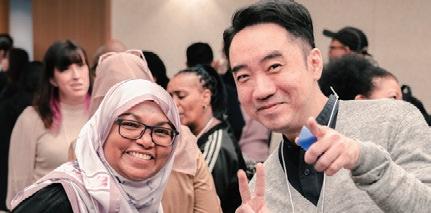










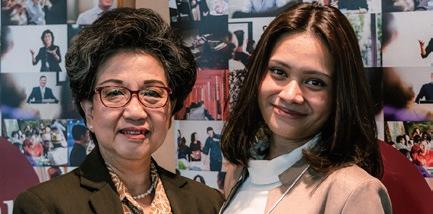




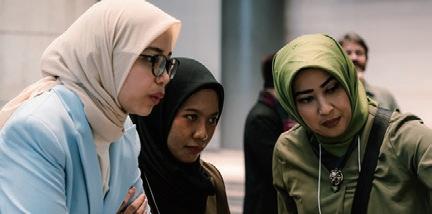










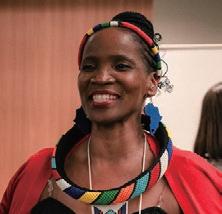



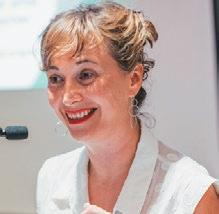
Bridging divides of nation, culture, and discipline; informing and shaping ideas, research, practice, and policy in a comparative and contrastive space, IAFOR encourages the sharing and nurturing of diverse ideas.
Over the past year, more than 5,000 delegates from more than 120 countries have participated in an IAFOR event.


Inspiring global collaborations, this diversity of peoples, nations, voices, cultures, and ideas is at the heart of what we do.
It is our greatest strength. Join us.
